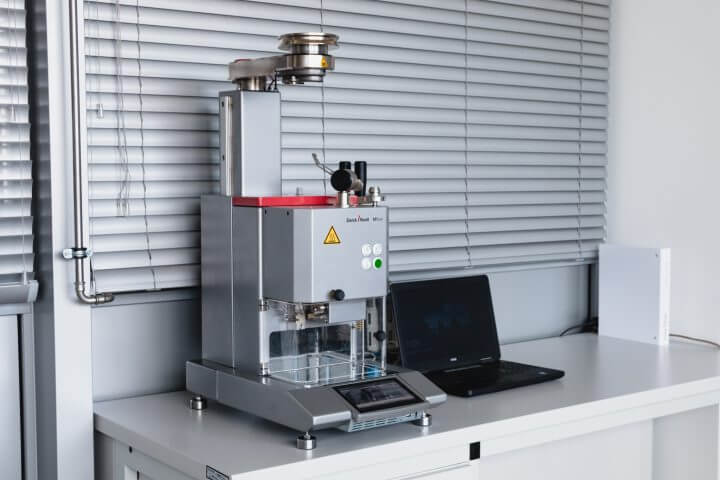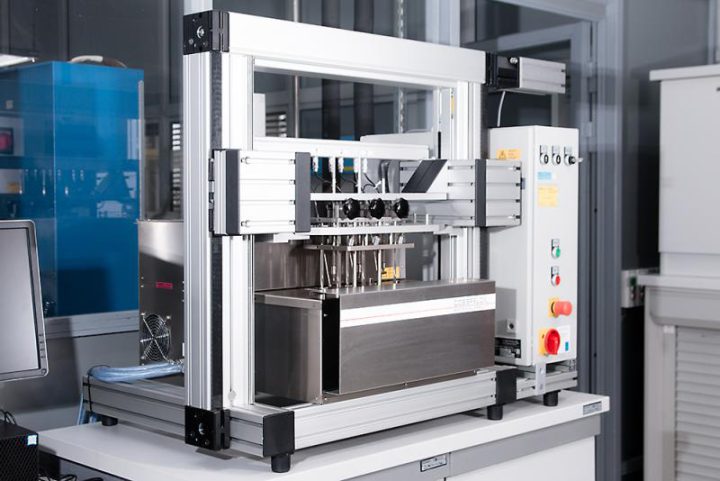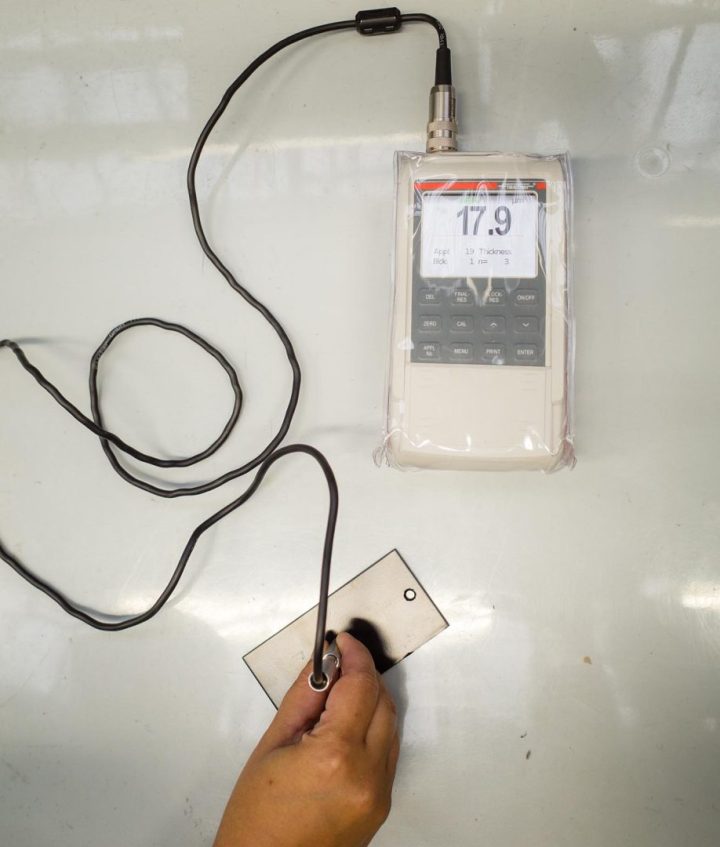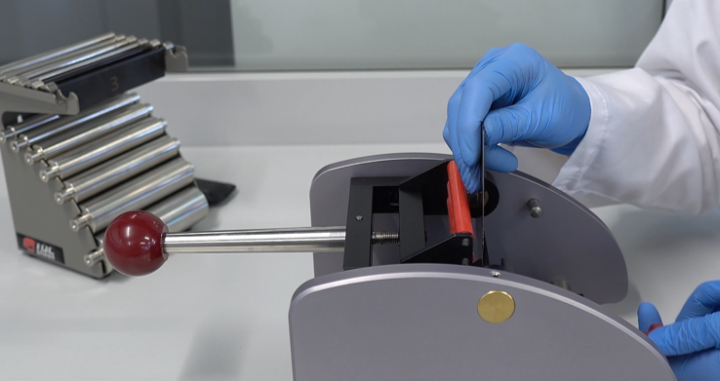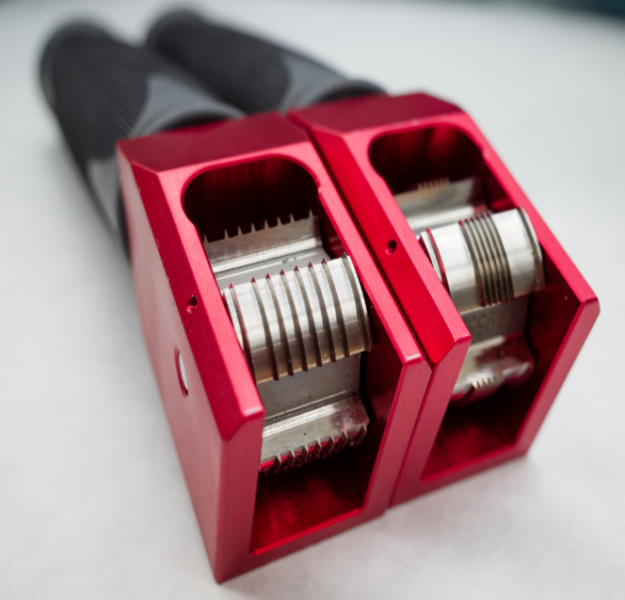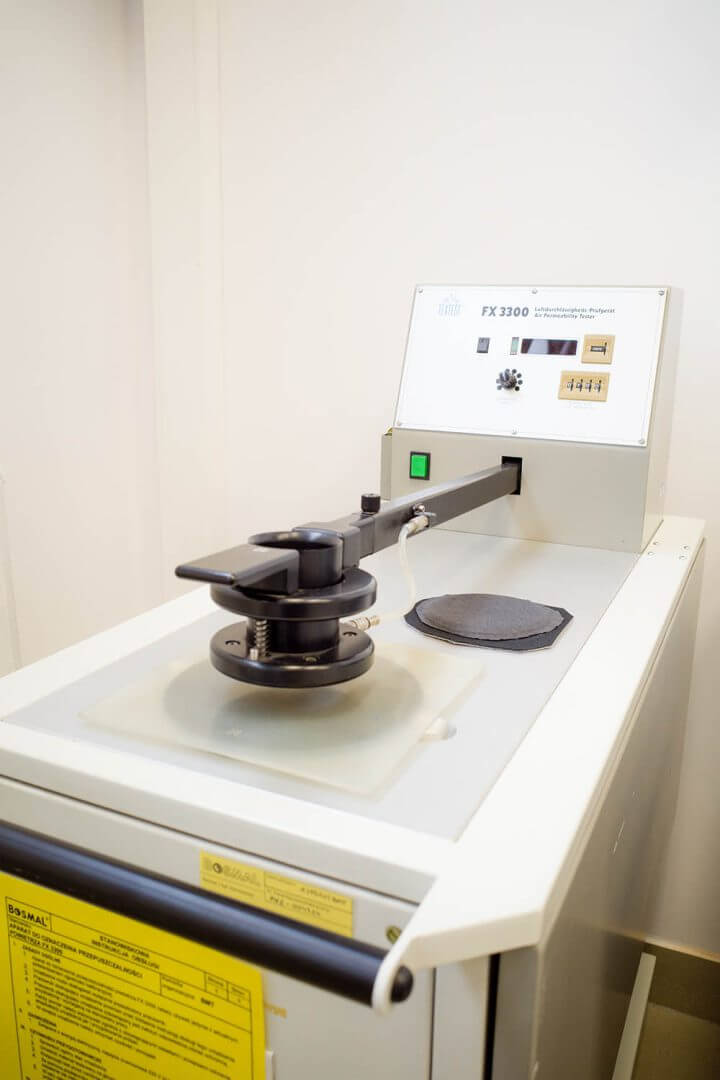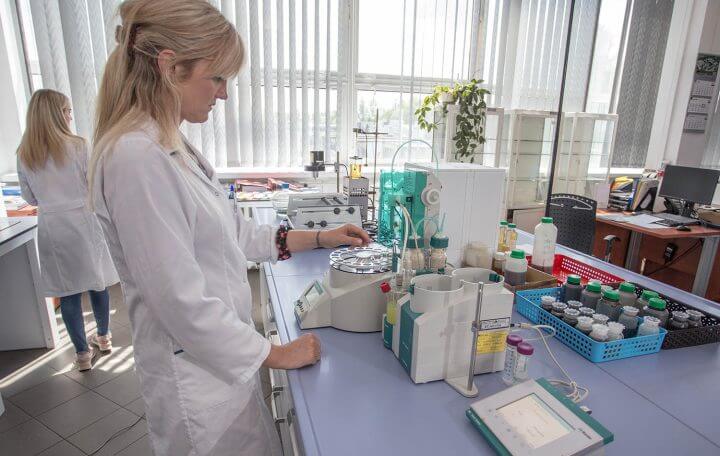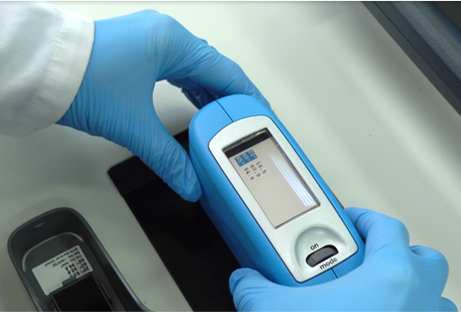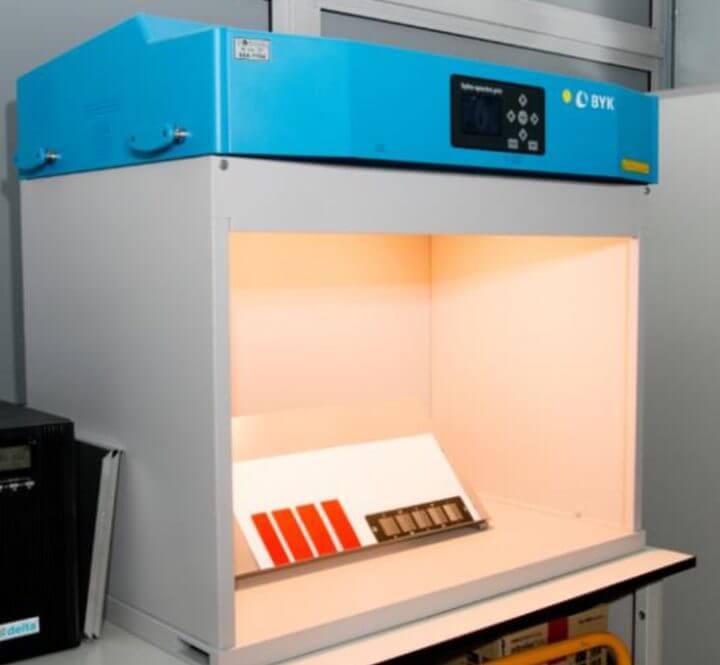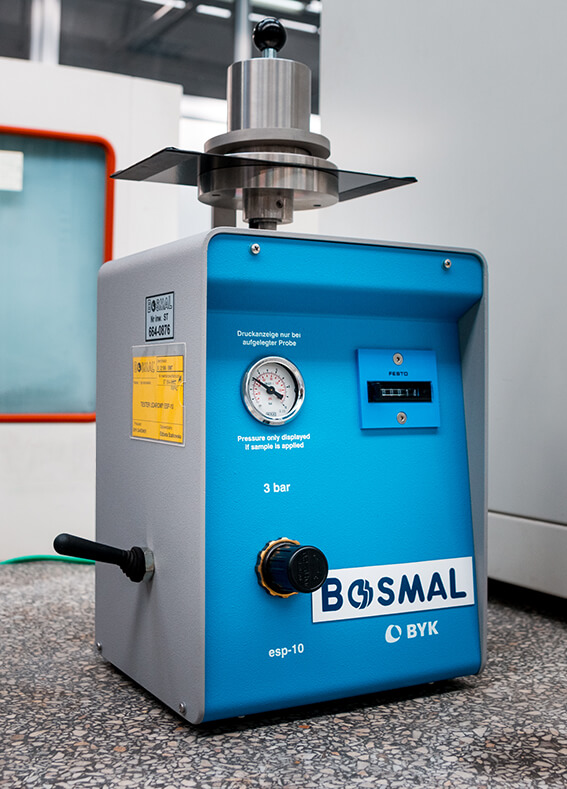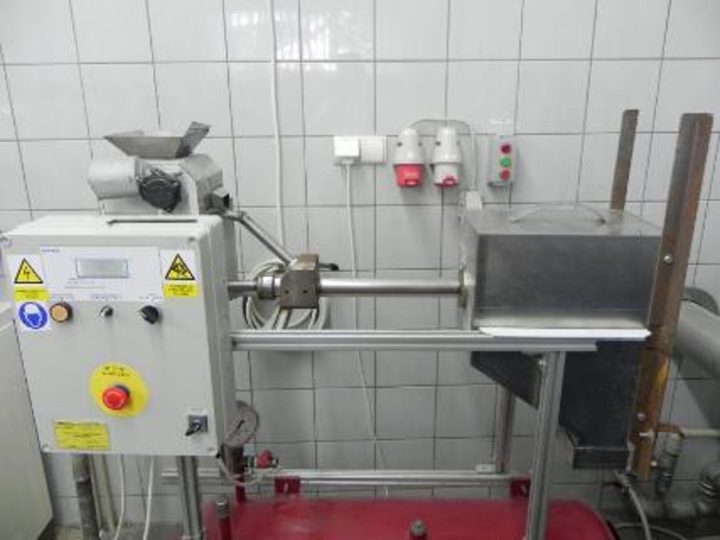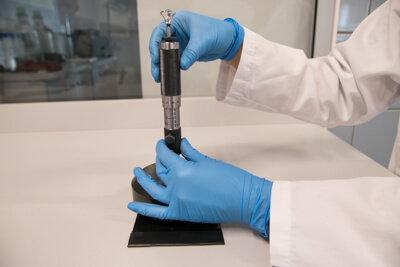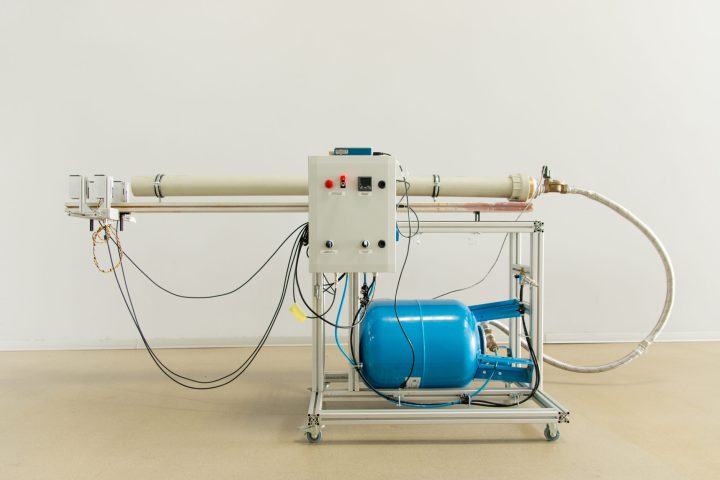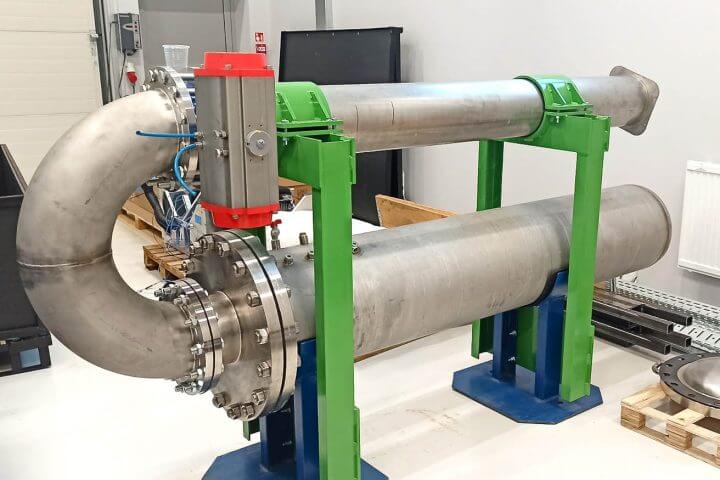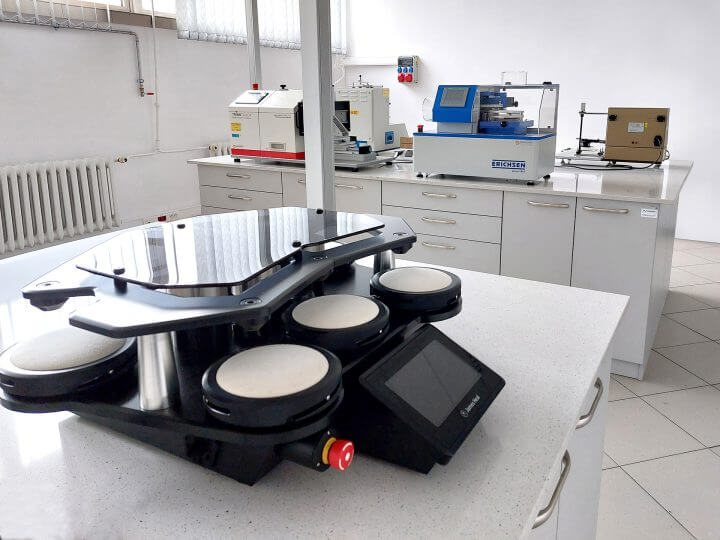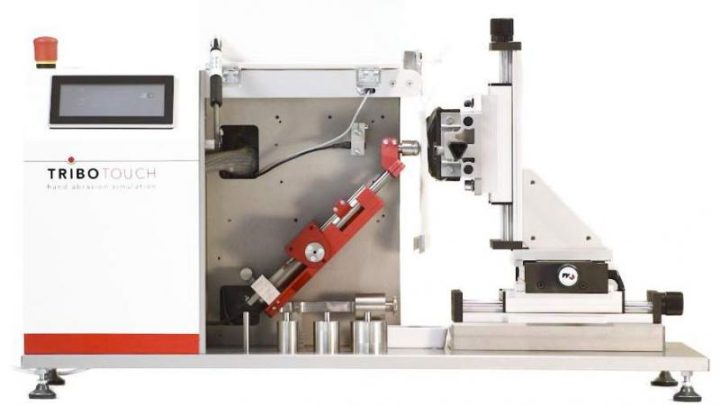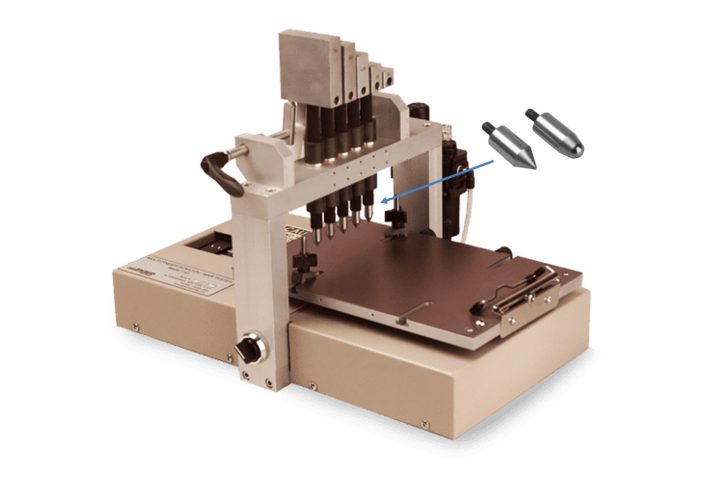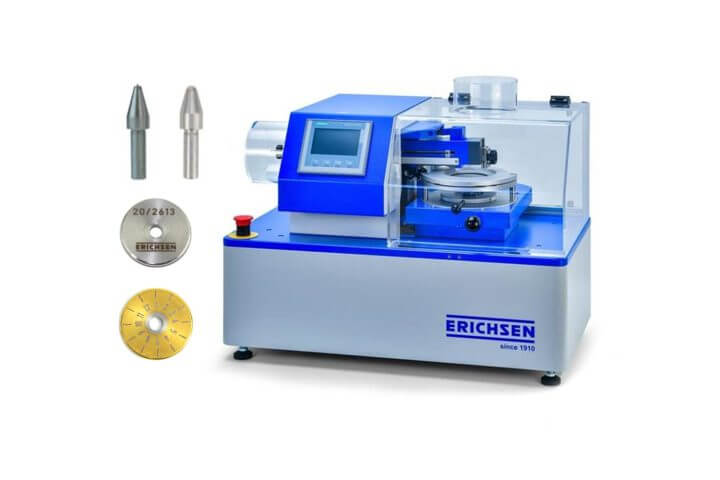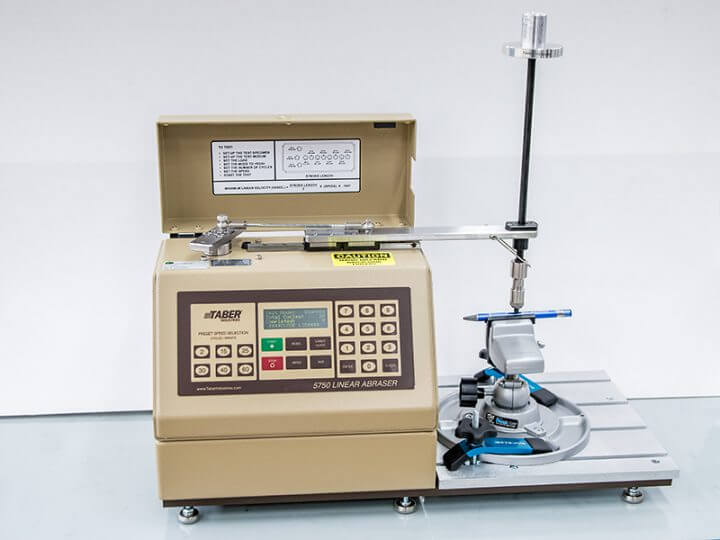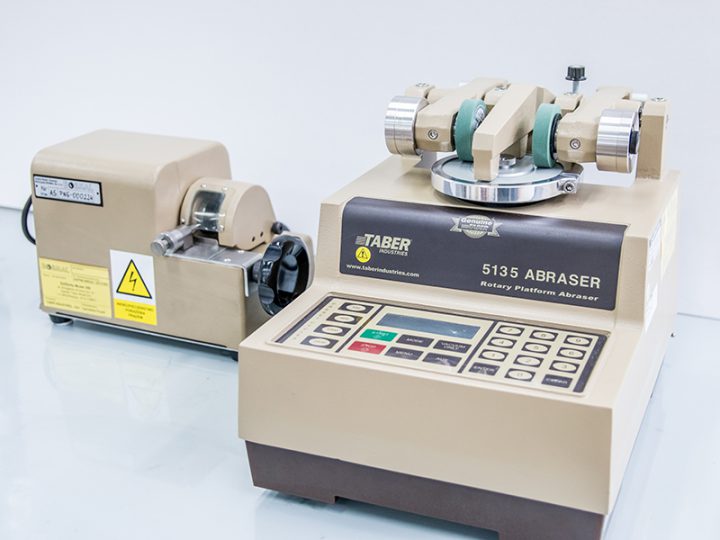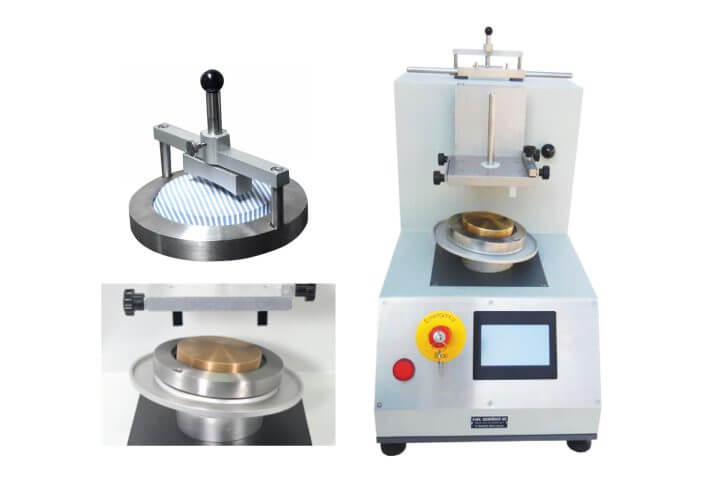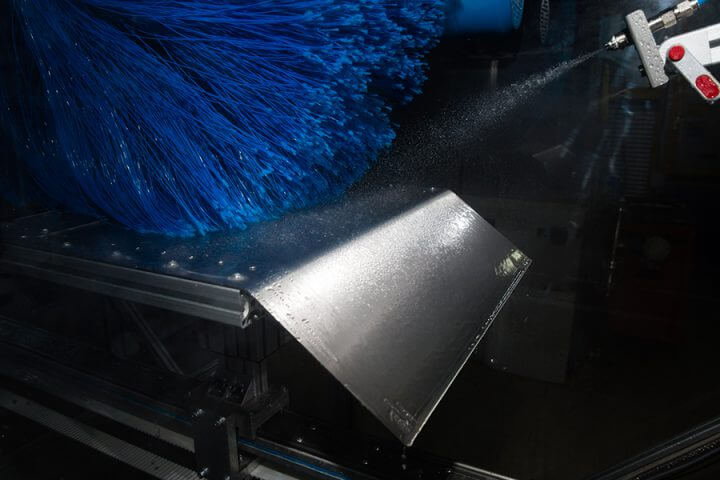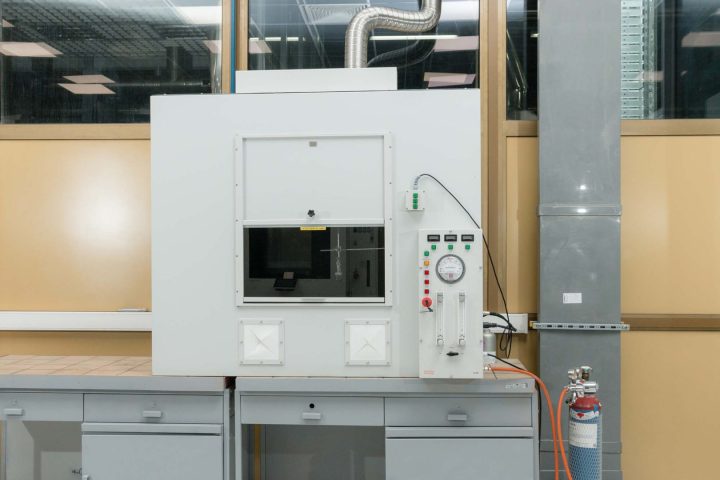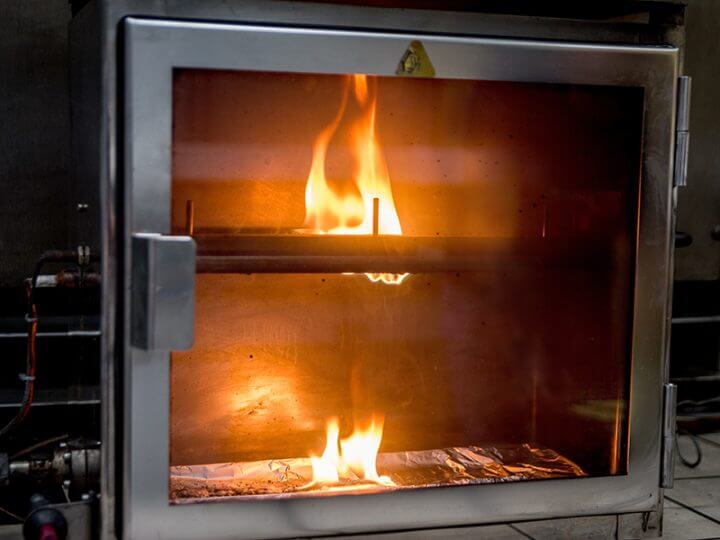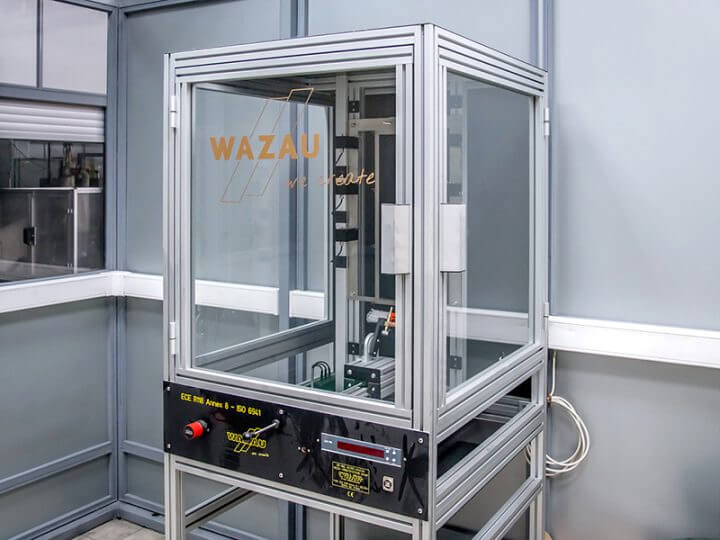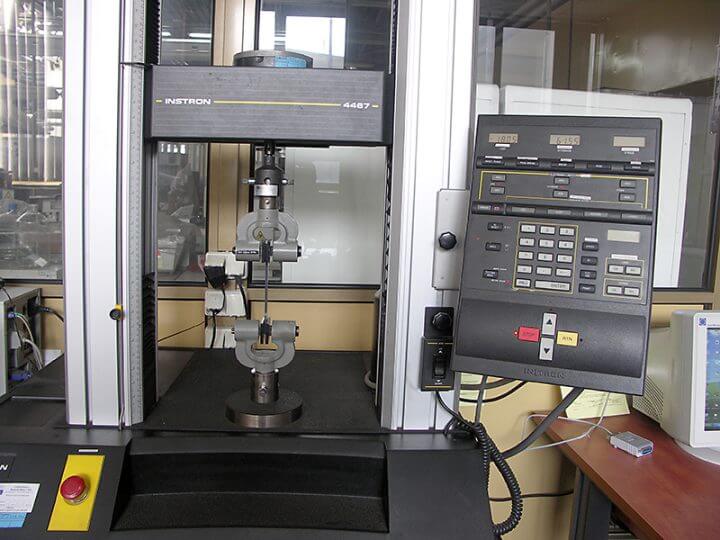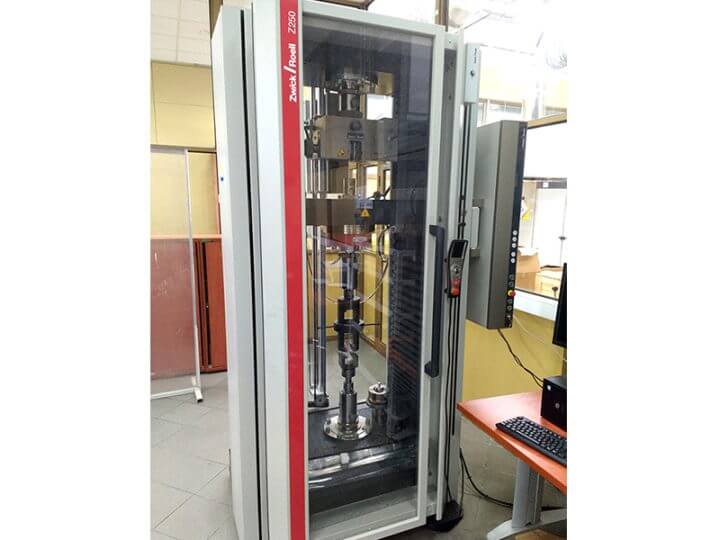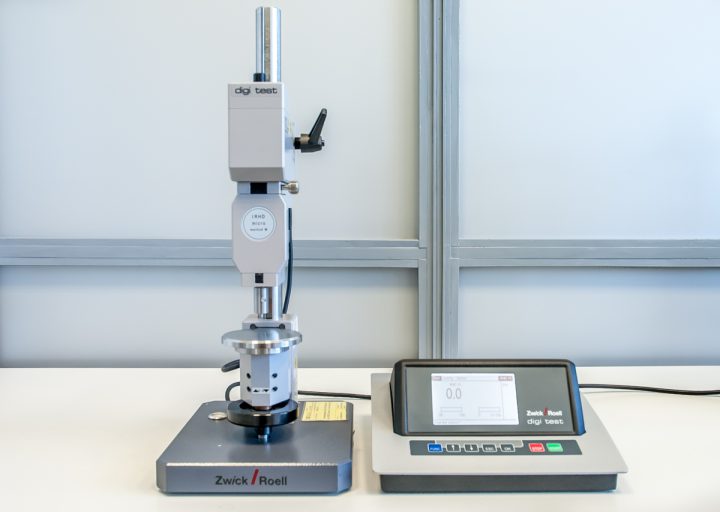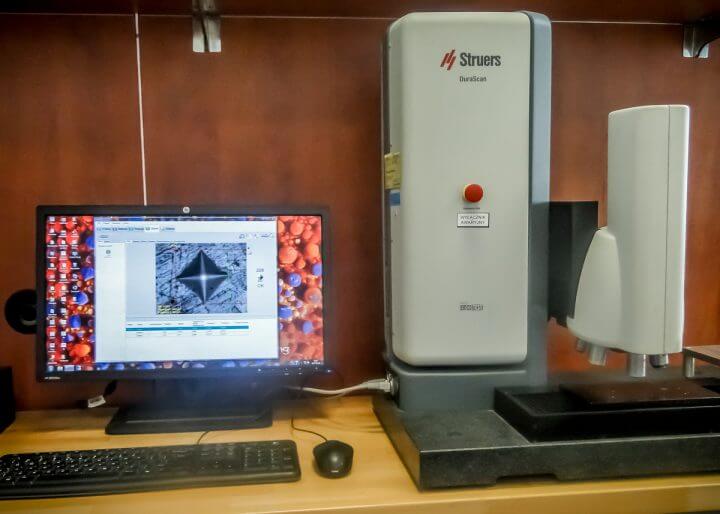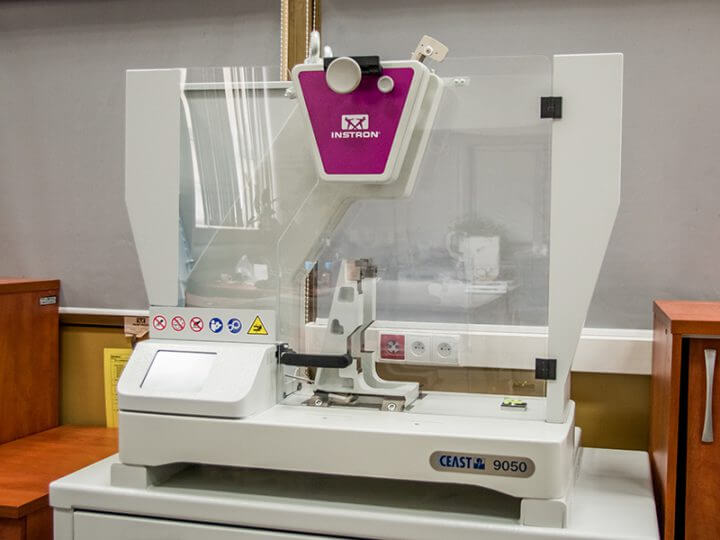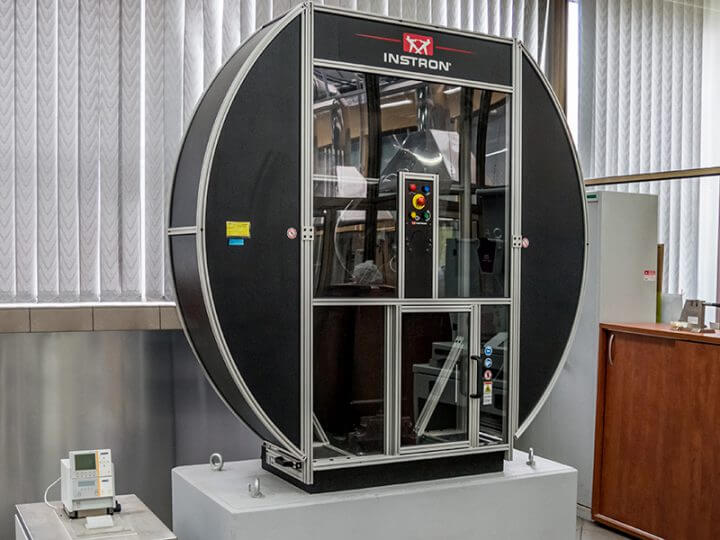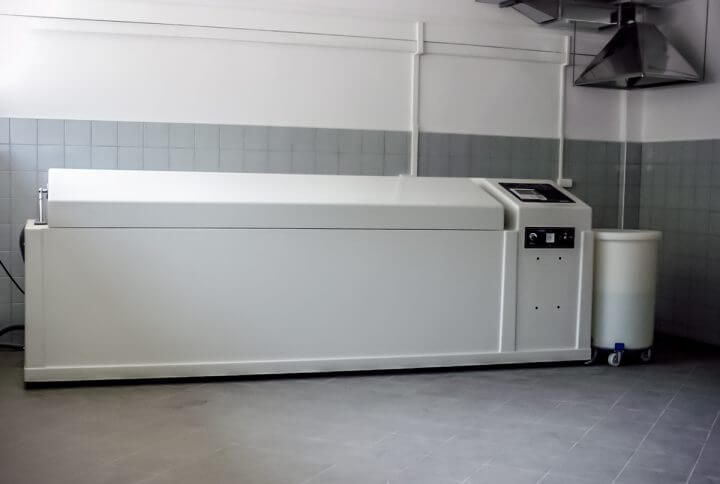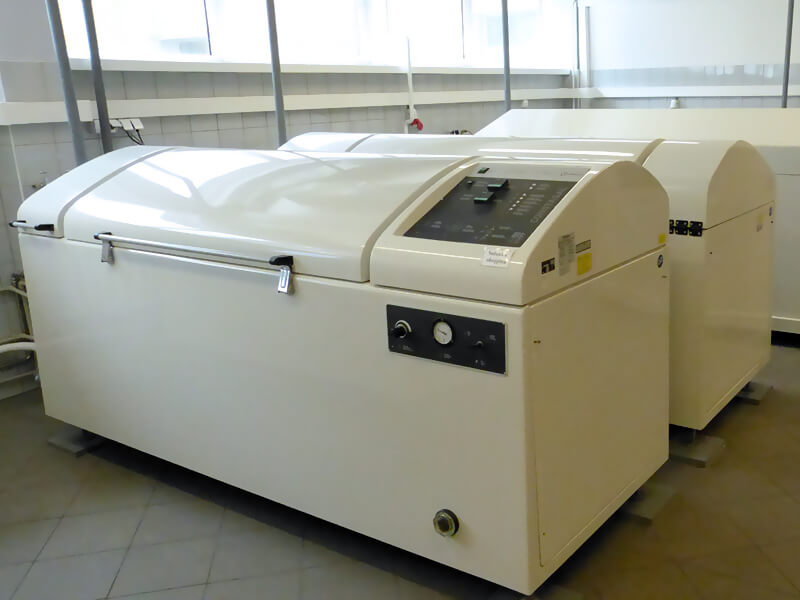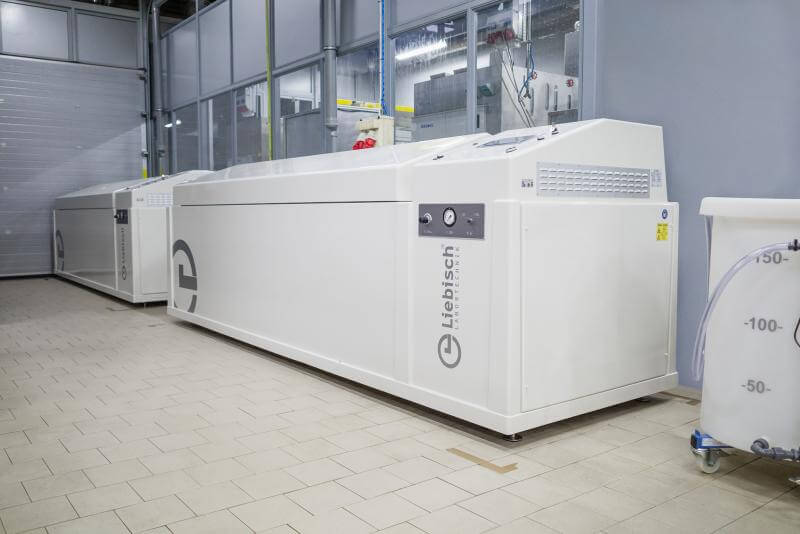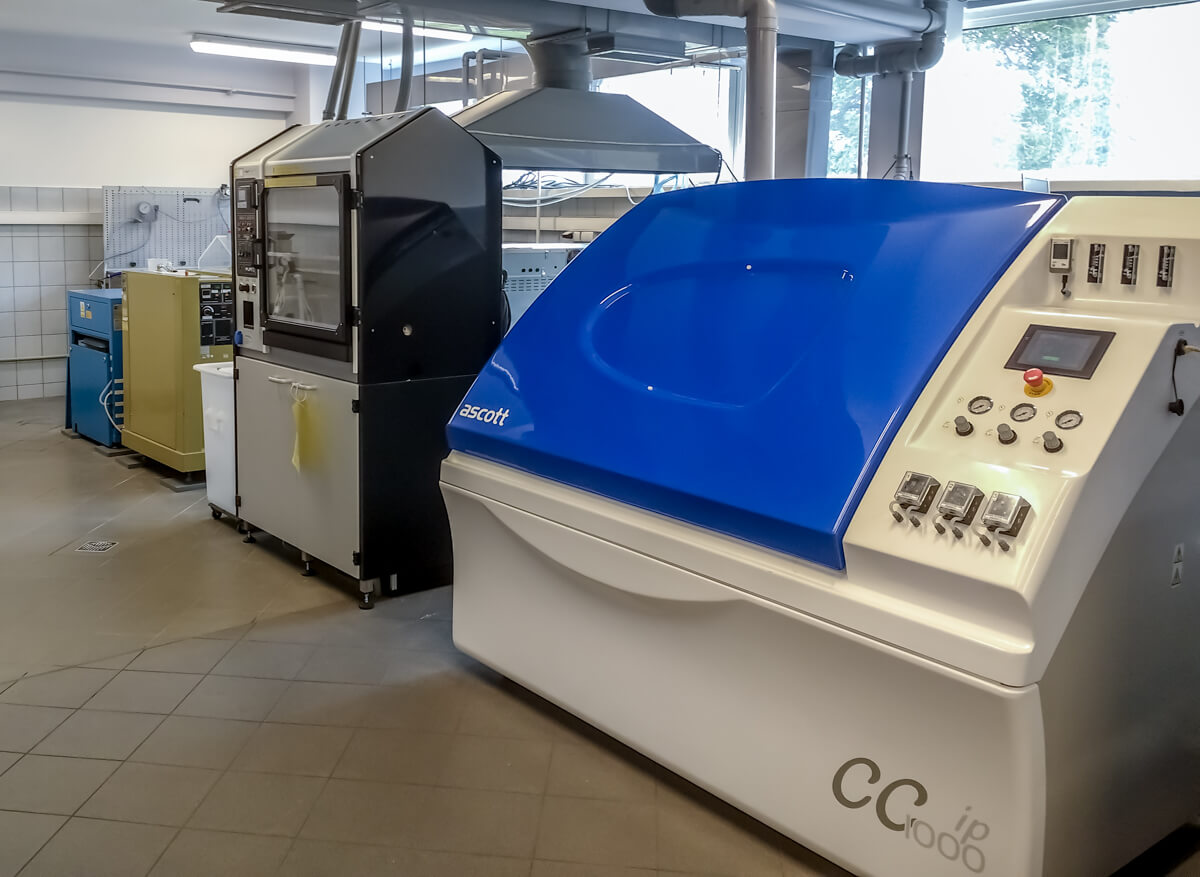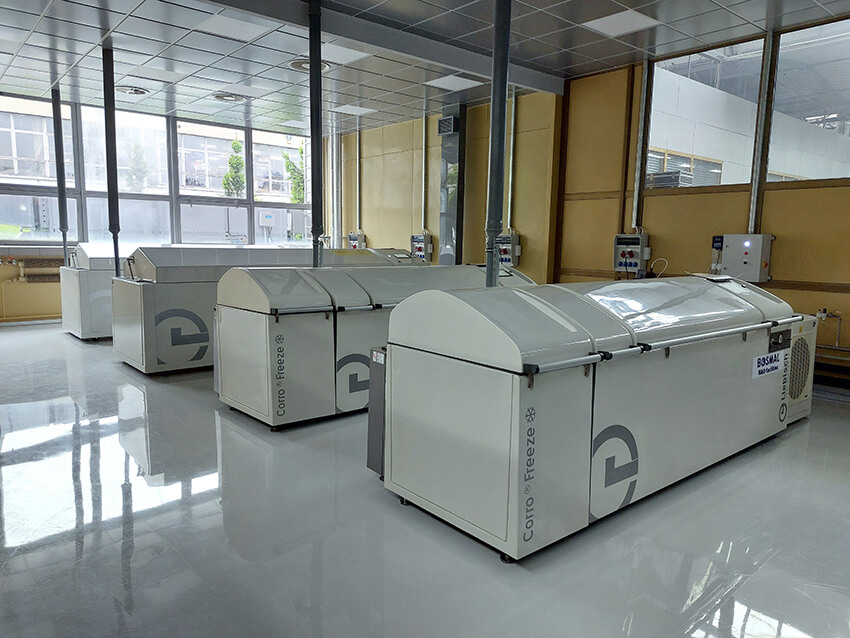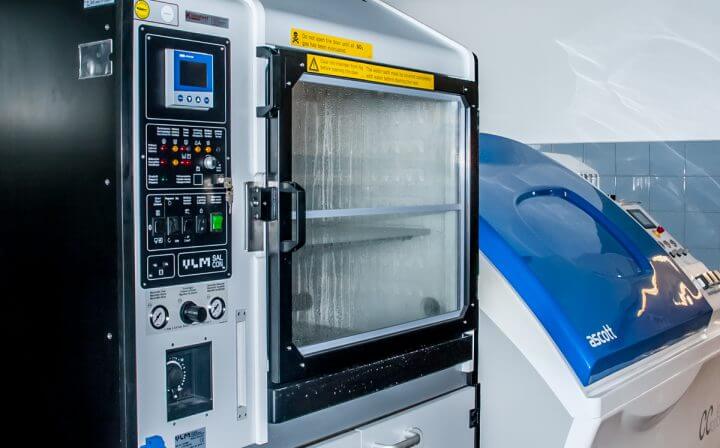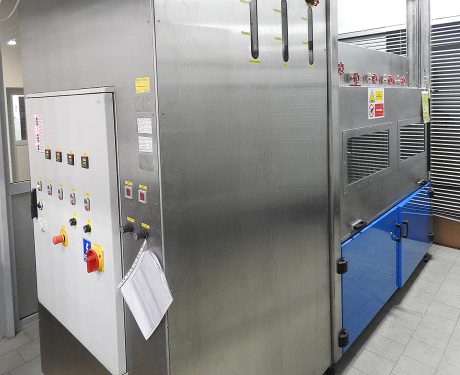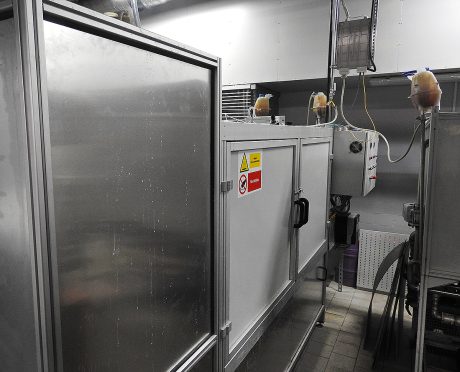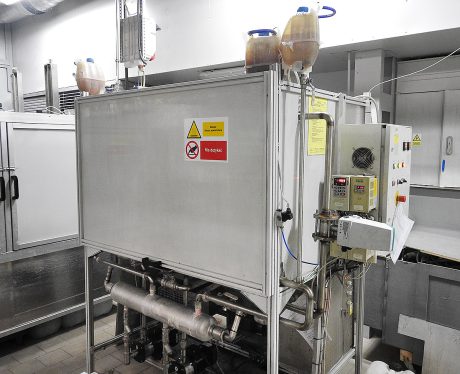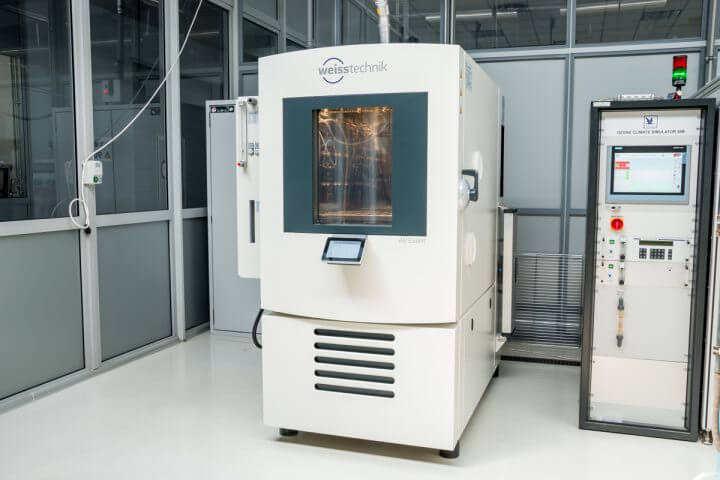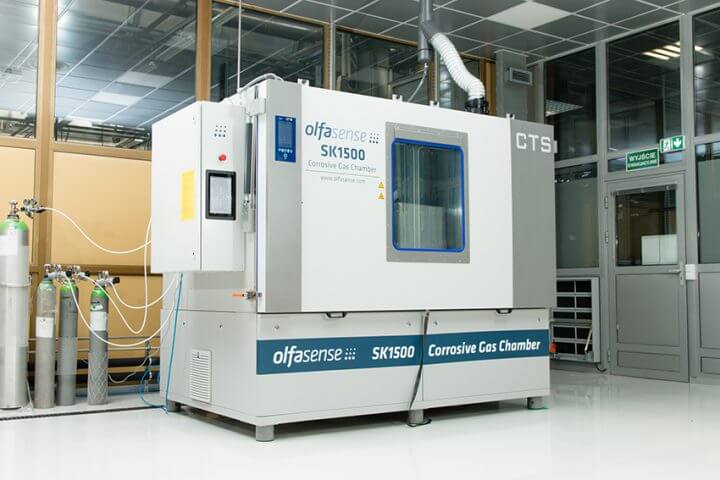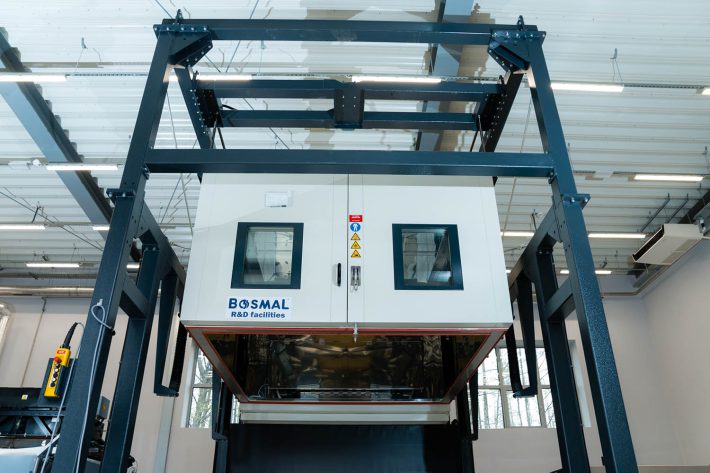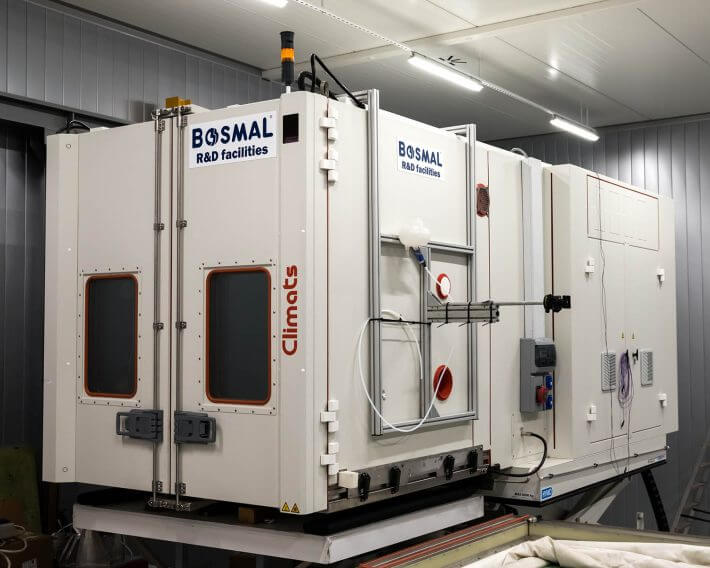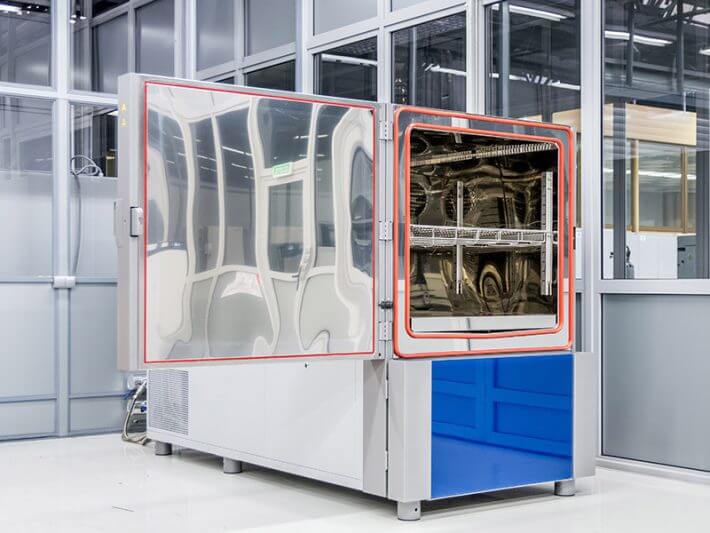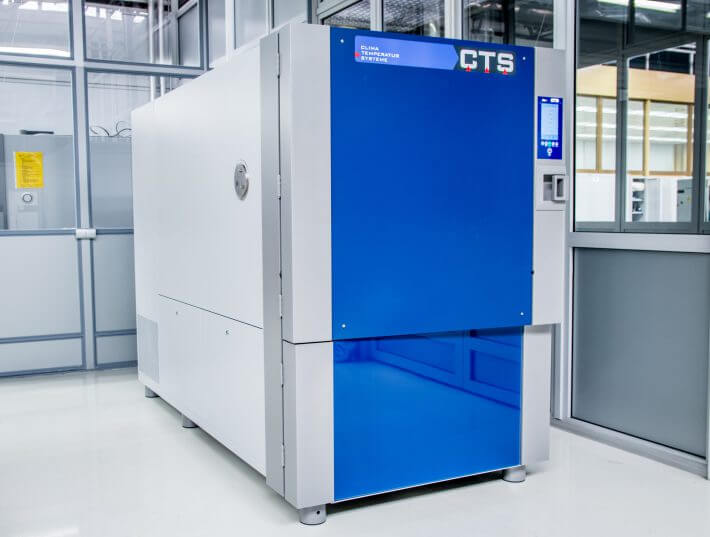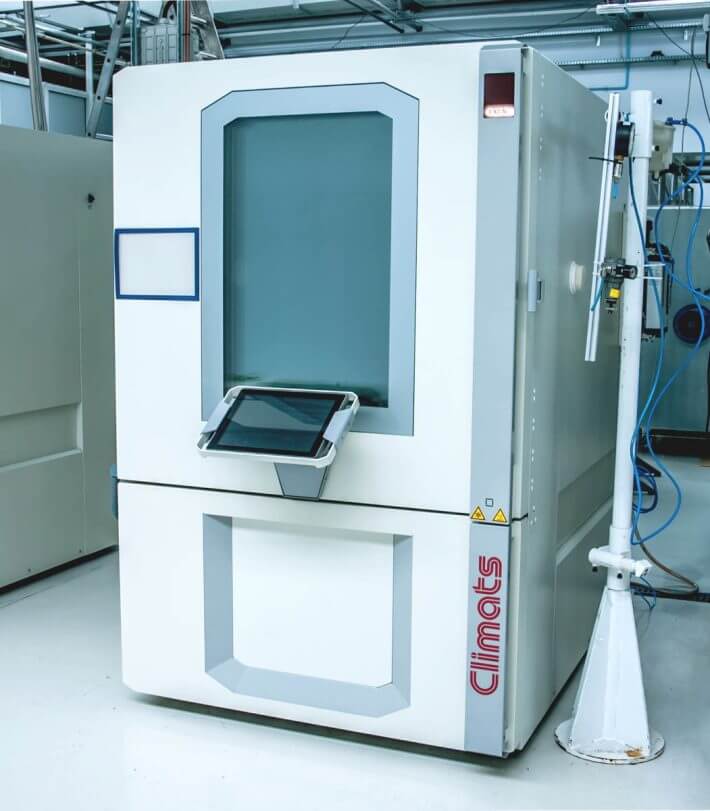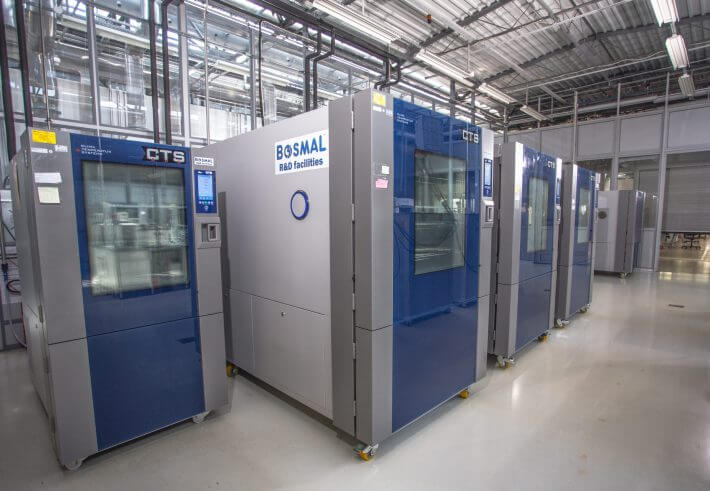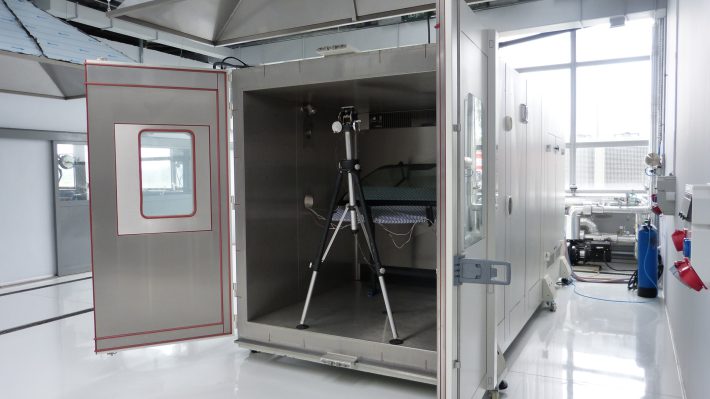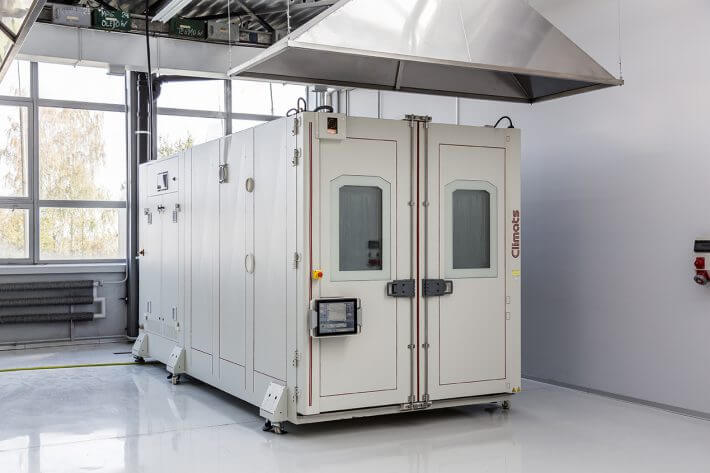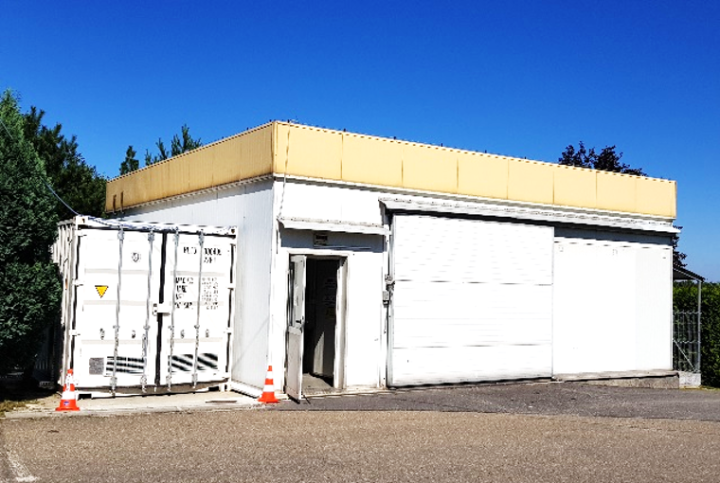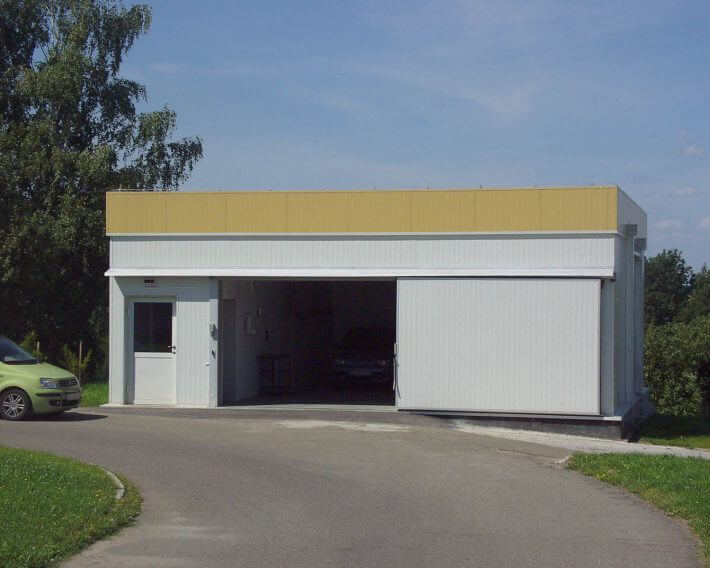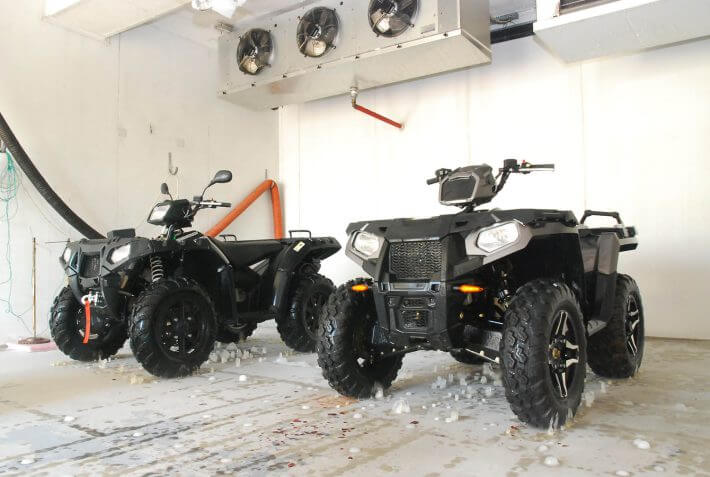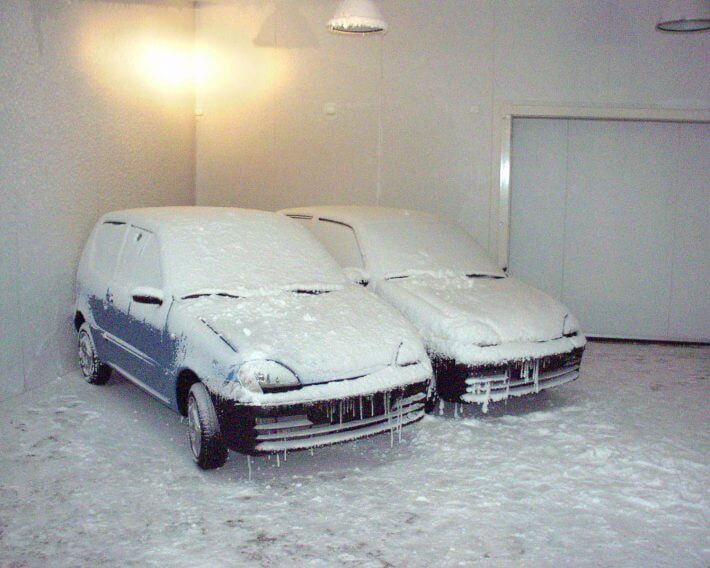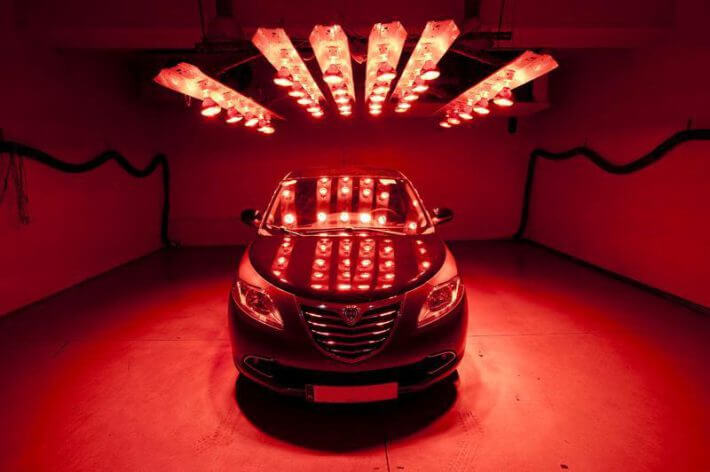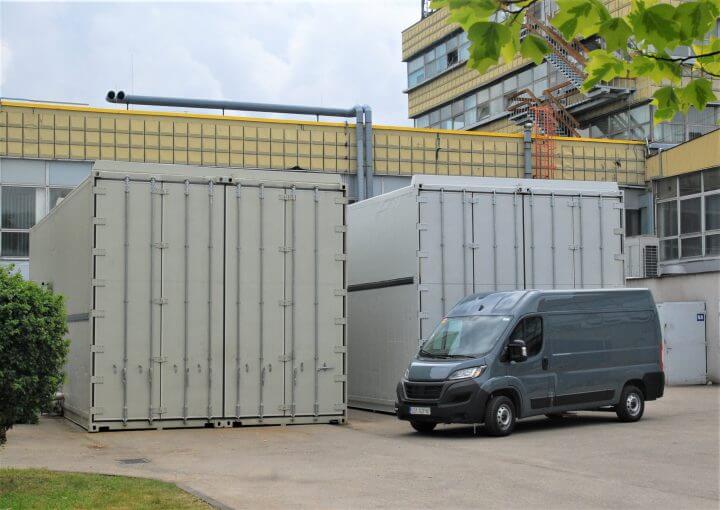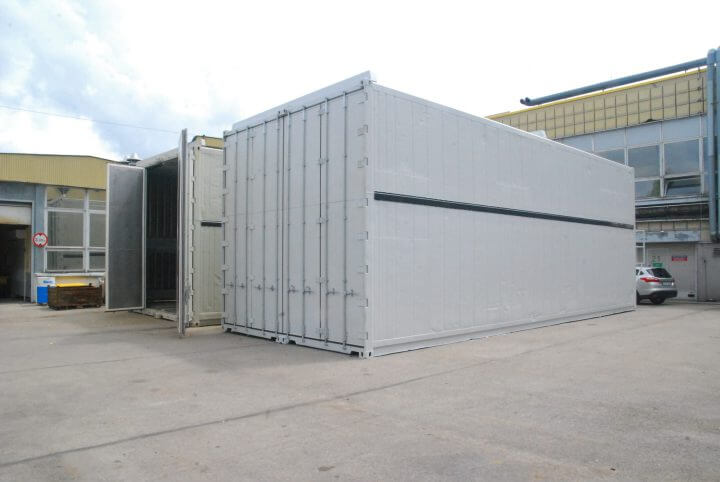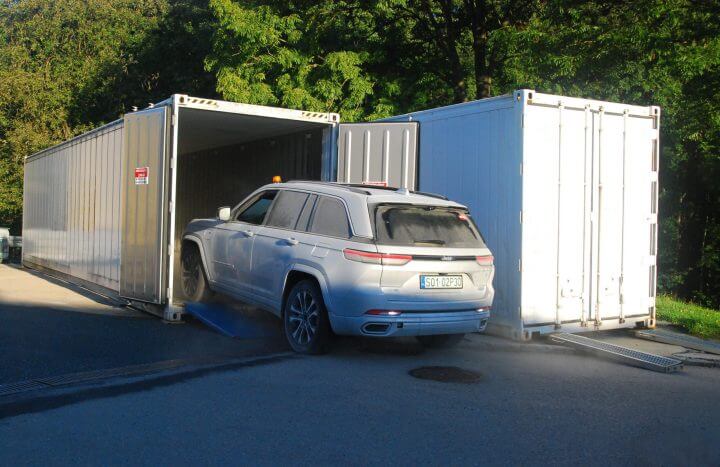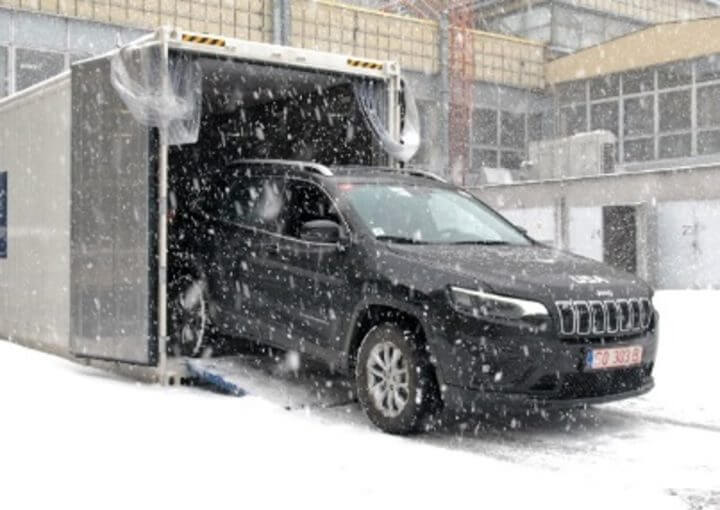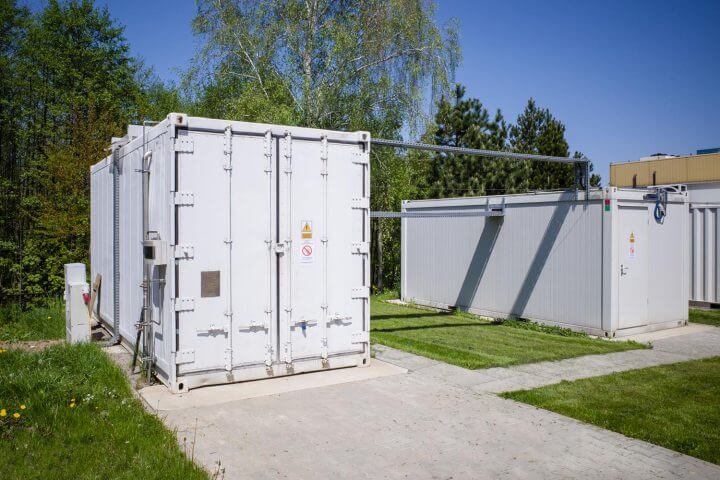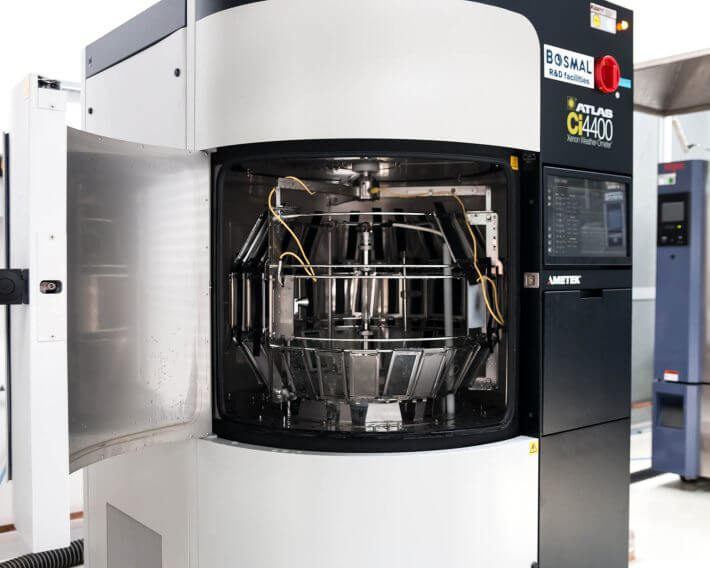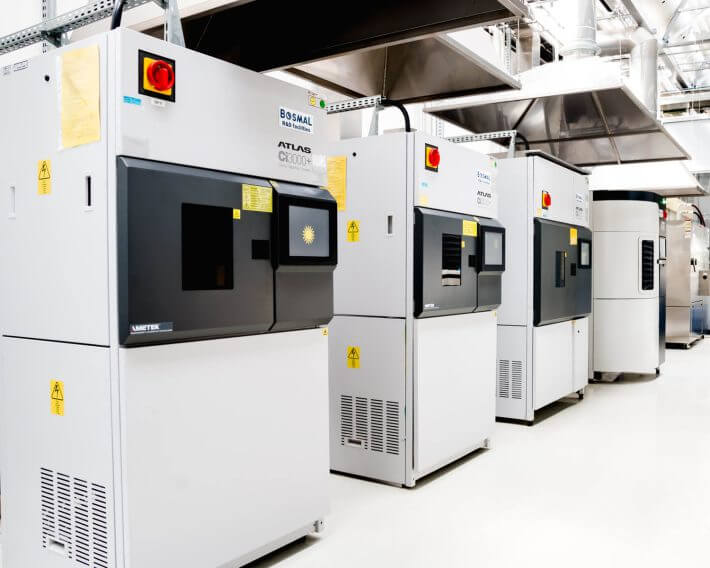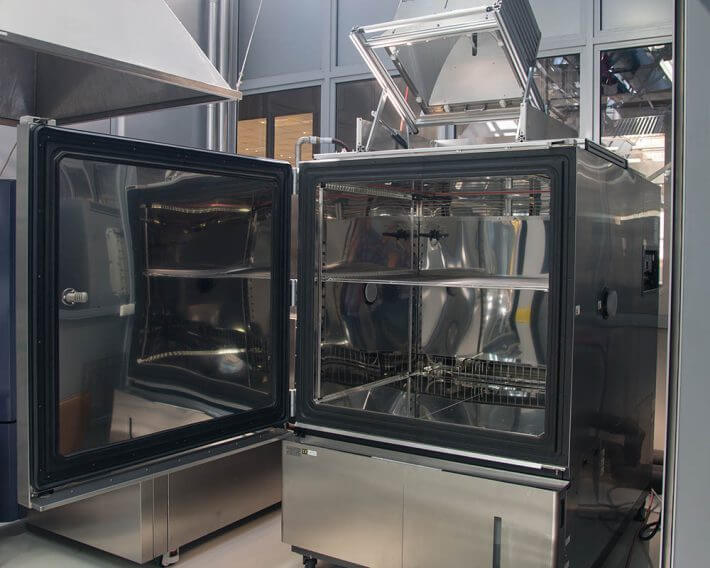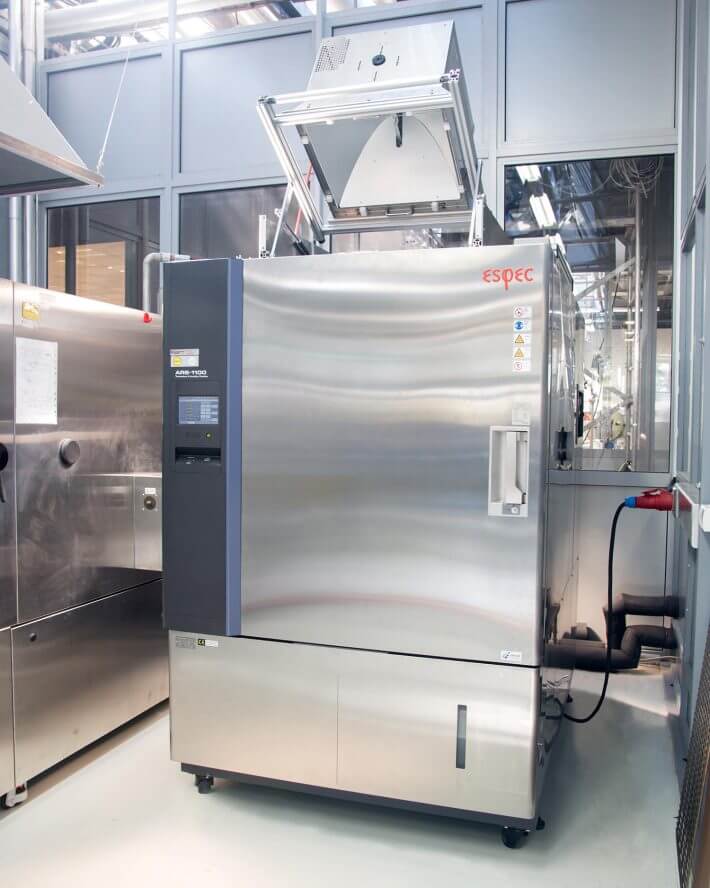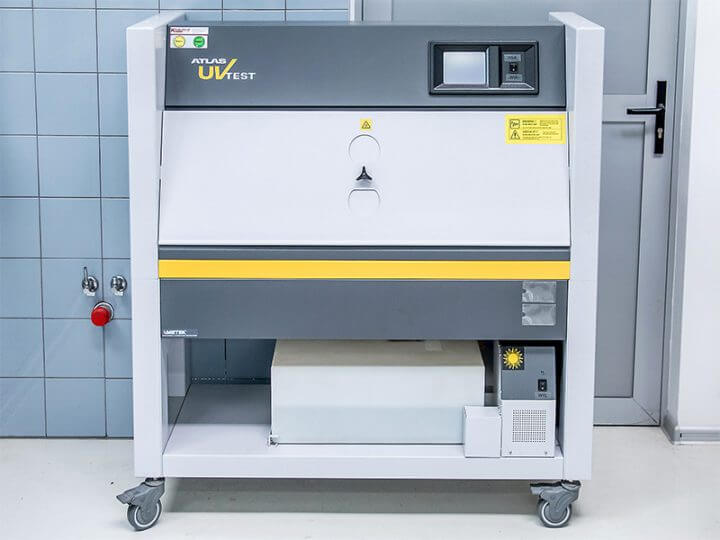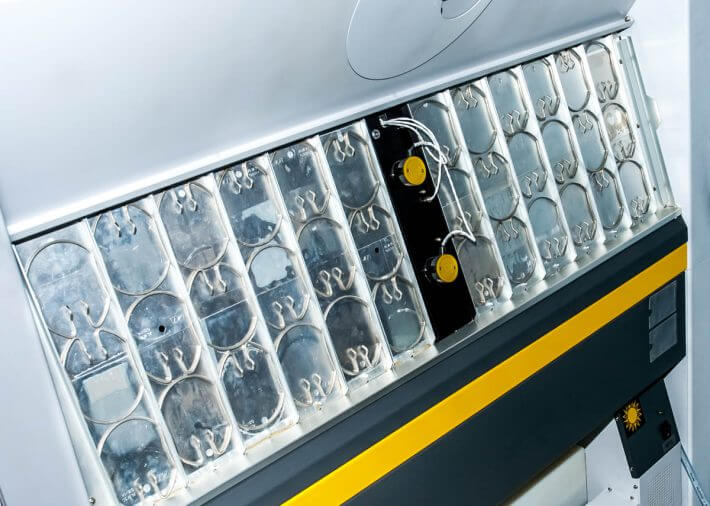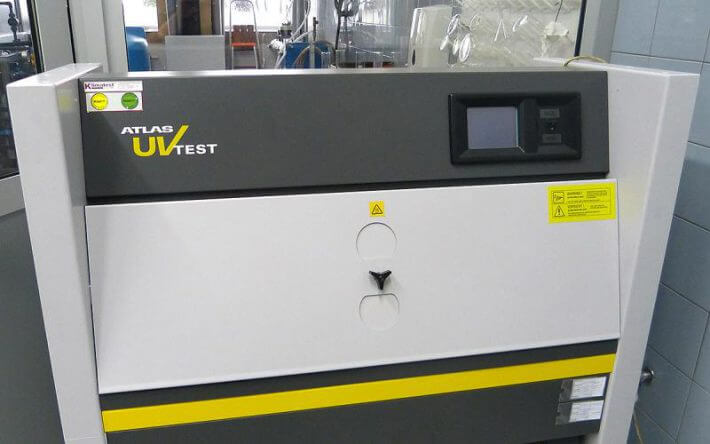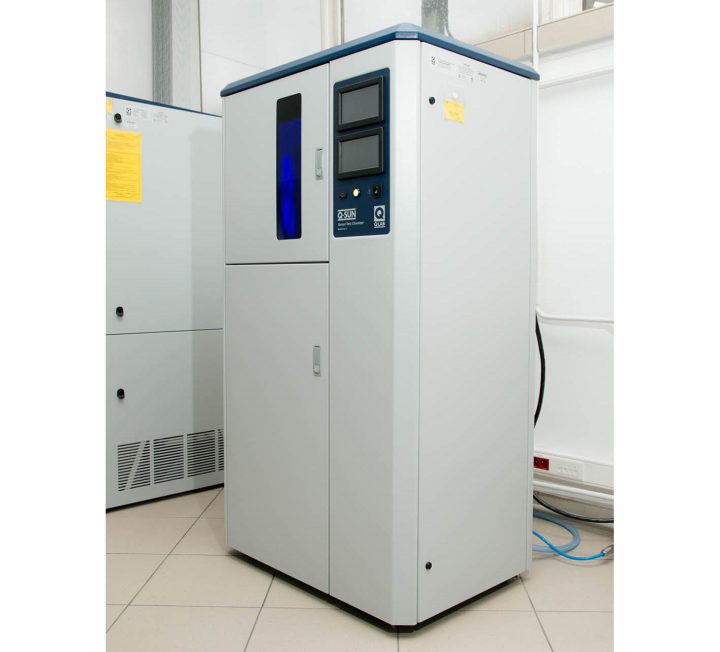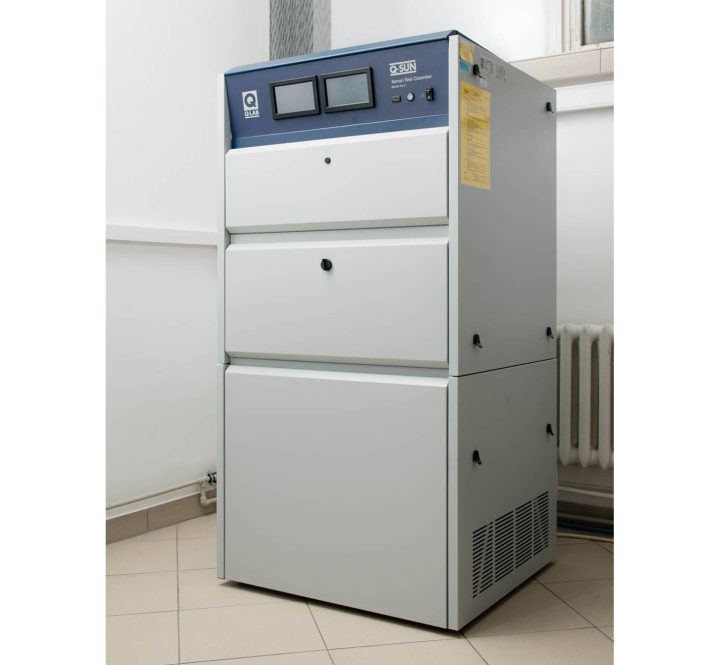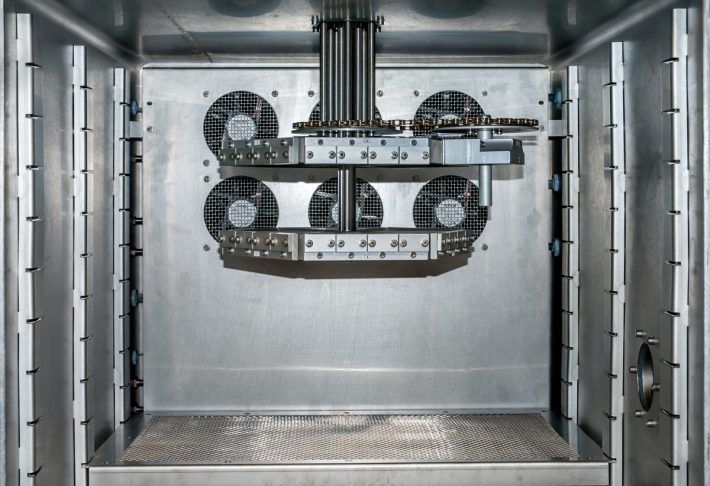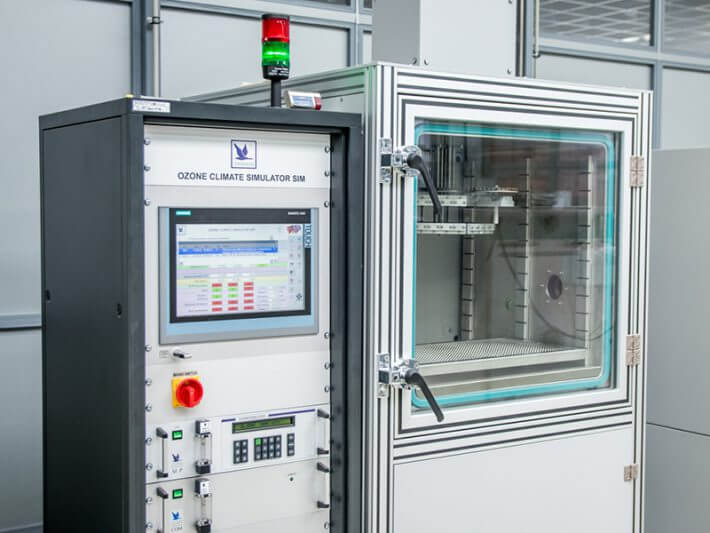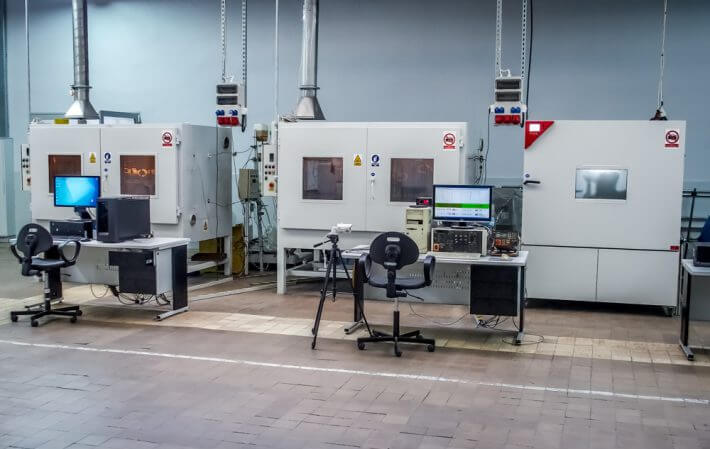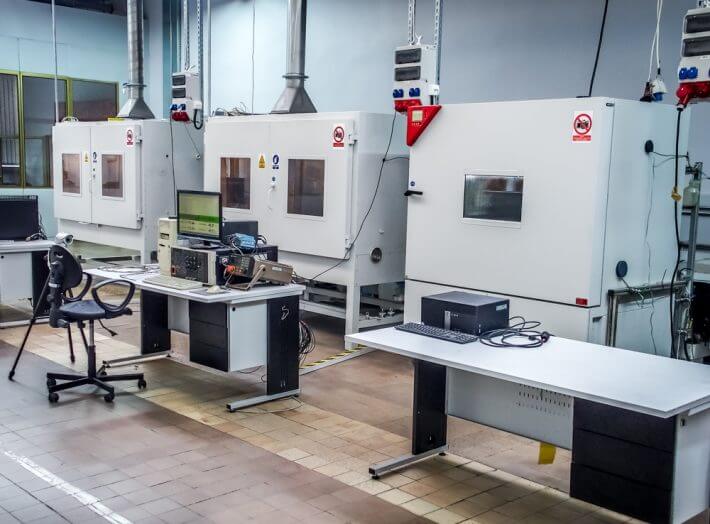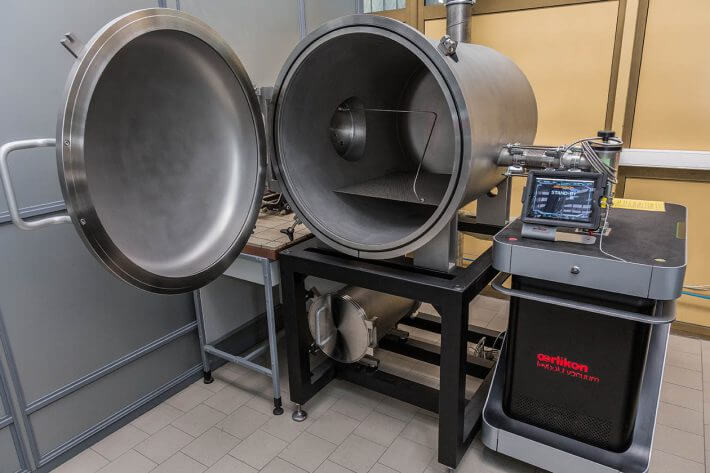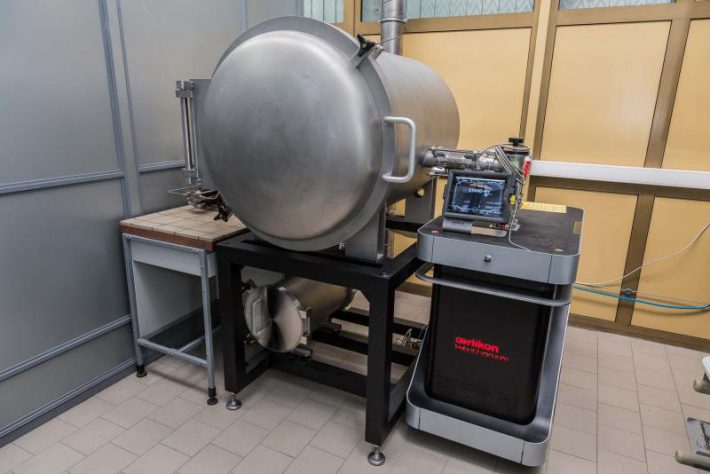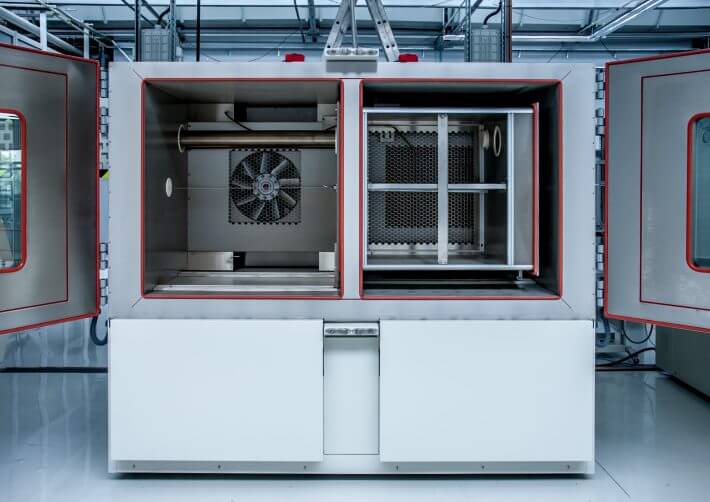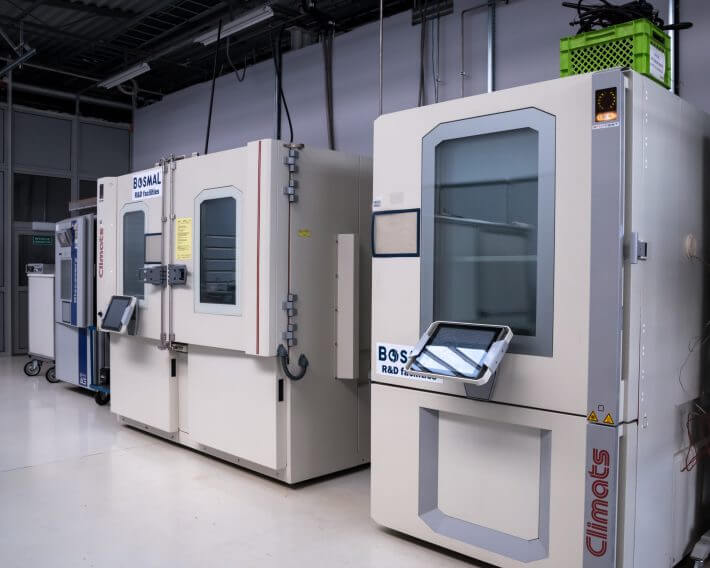This page presents the test methods and equipment used for physicochemical tests, ageing tests, aesthetic and functional properties tests, mechanical tests, internal and external corrosion and erosion tests, resistance to environmental conditions, high-pressure tests, etc.
Test methods and equipment – part 2

On this page:
- Equipment for testing the physicochemical properties of materials and products, including aesthetic and functional properties
- Extrusion Plastometer
- Vicat/HDT test device
- Coating thickness meter
- Flexibility strength tester according to ISO 1519
- Single- and multi-blade knives for cross-cut testing
- Air permeability tester
- Apparatus for the determination of water by the Karl Fischer method
- Glossmeter 20°/60°/85°
- Chamber for visual assessment of colour
- Equipment for testing the impact resistance of products
- Equipment for testing of coating resistance to abrasion and scratches
- Flammability testing equipment
- Equipment for testing internal and external corrosion and erosion and the effects of corrosive gases
See more:
Presentation of selected test methods and equipment – Part 1
On this page:
- Elemental analysers
- Chromatography
- Spectrometry
- VIS spectrophotometers
- Spectrophotometric colour measurements
- Fourier Transform Infrared Spectroscopy (FTIR)
- Spectroradiometric measurements
- Thermal analysis
- Microscopy techniques
- Apparatus for testing emissions and odours from materials
- Laboratory and equipment for testing technical cleanliness
- Equipment for testing petroleum products and operating fluids
Presentation of selected test methods and equipment – Part 3
On this page:
- Other selected equipment for testing automotive components and assemblies
- Selected equipment for vehicle, emissions, engine and powertrain testing; on-site and on-road tests
Equipment for testing the physicochemical properties of materials and products, including aesthetic and functional properties
Coating thickness meter
This universal instrument enables measurement of coatings on steel and iron (F) and on non-ferromagnetic metals (NF) to be performed, due to automatic substrate material recognition and the integration of both measurement methods. Furthermore, it enable measuring duplex coatings (lacquer/zinc) on steel simultaneously, displaying the values for the lacquer and zinc coatings individually.
The image above presents our meter with the coating thickness probe, which determines the thickness of materials through the magnetic induction method (on ferromagnetic substrates). This method is in accordance with the standards set forth in PN-EN ISO 2178:2016-06, PN-EN ISO 2361:1998, and PN-EN ISO 2808:2020-01, method 7B2.
Additionally, BOSMAL possesses the coating thickness probe, which determines coating thickness via the eddy current method (on non-ferromagnetic substrates), in accordance with the standards set forth in PN-EN ISO 2808:2020-01, method 7C.
Flexibility strength tester according to ISO 1519
This tester is used to determine the elasticity, elongation and adhesion of coatings during a bending test. The tester is designed to meet the requirements of ISO 1519. A 50×100 mm test plate is deformed over a shaft of specified diameter. The evaluation of the coating for cracks and/or separation from the substrate is carried out visually using an illuminated magnifying glass at 10× magnification.
Apparatus for the determination of water via the Karl Fischer method
The device enables the determination of water content by volumetric and coulometric methods, at any concentration level (ppm/%). It allows the determination of water in samples of plastics, rubbers, composites, lubricants, petroleum products, paints, adhesives, etc., with the possibility of gas flow (10-150 mL /min; N2, dry air or other gas).
Equipment for testing the impact resistance of products
Equipment for testing of coating resistance to abrasion and scratches
Flammability testing equipment
Equipment for testing mechanical properties
Tensile testing machine
- equipped with measuring heads: up to 500 N and up to 30 kN and an extensometer
- enables testing at temperatures from -70°C to 250°C
- allows determination of (among other properties): tensile strength, tear strength, permanent deformation after compression, hysteresis under compressive stress, strength under static bending, modulus of elasticity under bending
Endurance tester
The device enables execution of tests such as:
Stretching tests according to PN-EN ISO 6892-1, method A and B
- resistance, Rm
- plasticity limit, Re
- contractual plasticity limit, Rp
- lengthening, A
- necking, Z
Sintered products’ resistance to crushing using the squeezing method
- according to PN-EN ISO 2739
Connecting element stretching tests
- PN-EN ISO 898-1, apart from 9.13
- PN-EN ISO 898-5, apart from 9.4
- PN-EN 28839
- PN-EN ISO 6157-2
- PN-EN ISO 898-2
- PN-EN ISO 2320
Propensity to plastic deformation
- flattening method according to PN-EN ISO 8492
- drift expanding method according to PN-EN ISO 8493
Hardness tester
- hardness tester with interchangeable measuring heads in the range: Sh A, Sh AM, IRHD-M
- determination/verification of elastomer hardness on standard samples (or products) in the delivery stage, as well as following specified ageing tests
- Rockwell (hardness scales HRE, HRL, HRM, HRR) – measurement on 4 mm thick samples cut out from the product.
Equipment for testing internal and external corrosion and erosion and the effects of corrosive gases
Corrosion test chambers (salt-humidity, salt-cyclic, Kesternich (SO2) chamber)
The laboratory has a number of corrosion chambers that meet various customers’ requirements:
- salt fog and humidity test chambers
- cyclic corrosion test chambers
- Kesternich (SO2) chamber
- internal and high flow corrosion test benches
- noxious gas test chambers
In addition, the laboratory is able to prepare a suitable test chamber or test stand to suit specific customer requirements.
Salt fog and humidity test chambers and cyclic corrosion test chambers
Chambers for testing the resistance of objects to external agents in artificial corrosive atmospheres (e.g. salt spray, immersion in corrosive solutions, defined climatic conditions, water condensate, etc.).
- operating capacities: from 1 m3 to 2.5 m3
- temperature range: from -20°C to 70°C
- humidity range: from 20 to 98% RH and from ~95 to 100% RH
- spray pressure: up to 3 bar
- cyclic corrosion testing (CCT)
- media: NSS, CASS, ASS, SWAAT, others.
Examples of evaluation methods used after testing, visual evaluation: evaluation of coating deterioration; evaluation of the degree of: blistering, rusting, cracking, peeling, chalking by the tape method, delamination and corrosion around the notch; colour change and grey scale, as well as many others.
Examples of evaluation methods used after mechanical testing (examples): notch grid test, determination of coating resistance to stone impact, multi-impact test, pistol test, determination of coating hardness by pencil method, and many evaluation methods.
In the photo: salt fog and humidity test chamber; 2500 l; working space (58×270×101) cm
Kesternich (SO2) chamber
It allows testing the resistance of objects in sulphur dioxide, water condensate, or salt spray environments, among others.
- working volume: from 0.4 m3 (400 L) to 1.0 m3 (1000 L)
- temperature range: from RT to 50°C
- humidity range: from ~95 to 100% RH
- spray pressure: up to 3 bar
- media: NSS, CASS, ASS, SO2, others
Examples of evaluation methods used after testing, visual evaluation: evaluation of coating deterioration; evaluation of the degree of: blistering, rusting, cracking, flaking, chalking by tape method, delamination and corrosion around the notch; colour change, grey scale, as well as many others.
Examples of evaluation methods used after testing, mechanical testing (examples): notch grid test, determination of coating resistance to stone impact, multi-impact test, pistol test, determination of coating hardness by the pencil method, as well as many others.
In the photo: Kesternich chamber; 400 l; working space (68×80×58) cm
Test benches for ageing and corrosion / internal erosion (internal and high flow corrosion)
These test stands and/or chambers are often built for a requested test.
Noxious gas test chambers
Corrosion gas chamber
Parameters and equipment
- internal dimensions: 630×630×670 mm (W×D×H)
- working volume: approx. 270 L
- working temperature: from 10 to 90ºC
- humidity: 10 – 98% RH
- air exchange rate control by flow sensor: 3-4 times an hour
- ventilated cabinet with extraction and gas dosing system
- dosing of up to four noxious gases with 4 dosing lines, 1-100 ml/min
- internal chamber for corrosion tests
- SPM Flex gas concentration analyser for monitoring the current concentration of corrosive gases in the chamber
- Honeywell SPM Flex gas concentration detector with chemcassettes
Corrosion gas chamber
Parameters and equipment
- internal dimensions: 1850×900×900 mm (W×D×H)
- total volume: approx. 2800 L
- working volume: approx. 1500 L
- load capacity (bottom of test chamber): max. 75 kg/m2
- load capacity (shelves in the test chamber): max. 20 kg/m2
- working temperature: 10 – 60ºC
- humidity: 10 – 80% RH
- air exchange rate control by flow sensor: 3-5 times an hour
- dosing of up to four noxious gases with 4 dosing lines, of 1-100 ml/min
- up to four corrosive gases can be tested simultaneously in the atmosphere
Apparatus for testing resistance to environmental conditions – temperature, humidity and light, as well as ageing in an atmosphere with ozone
Temperature chambers and ovens
The institute has a number of temperature chambers of various temperature ranges and sizes. They allow testing or conditioning of objects at elevated or negative temperatures, ranging from -40°C to 300°C.
Dimensions (depending on the chamber) height×width×depth: from 700×650×604 to 1000×900×1600.
-
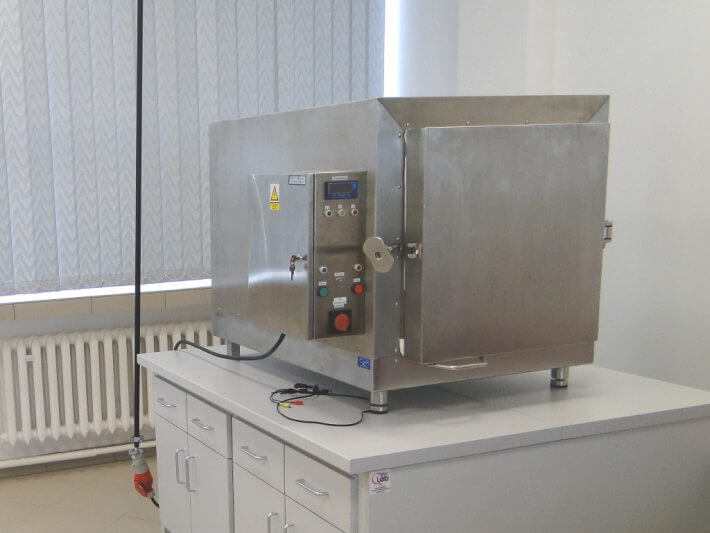
Komora temperaturowa – Wykorzystywana do badań szczelności samochodowych układów klimatyzacyjnych – badania emisji freonów. Wymiary wewnętrzne: 600x600x1000 mm -
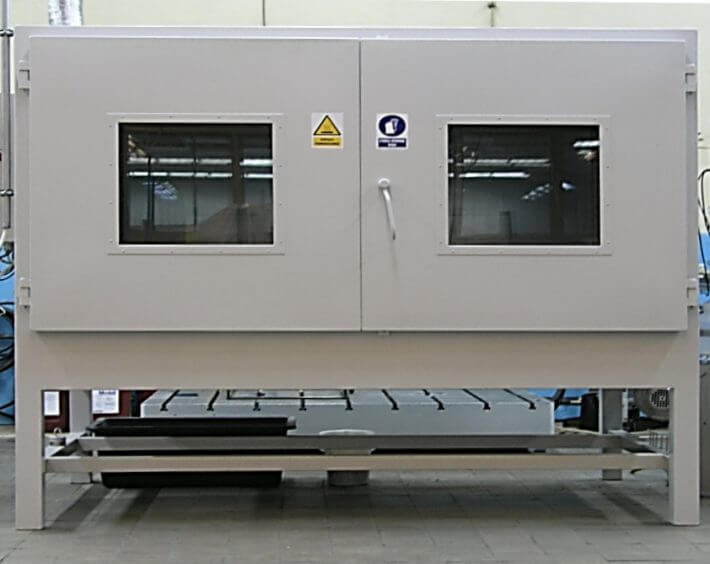
Komora temperaturowa firmy – Umożliwia badania w zakresie od temperatury otoczenia do 275°C, jak również testy ciśnieniowe -
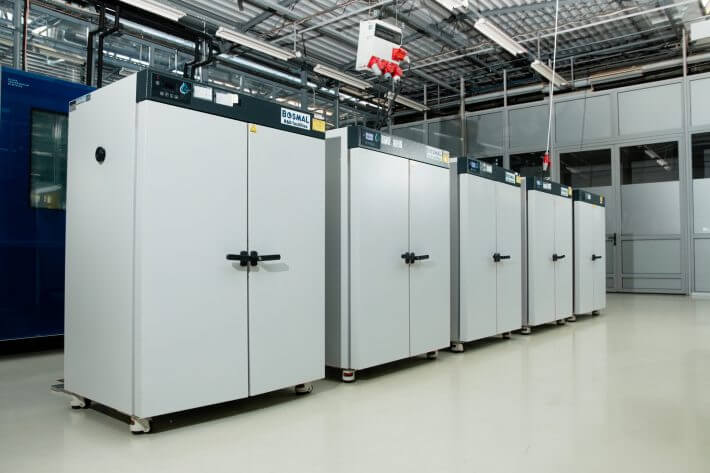
Komory temperaturowe -
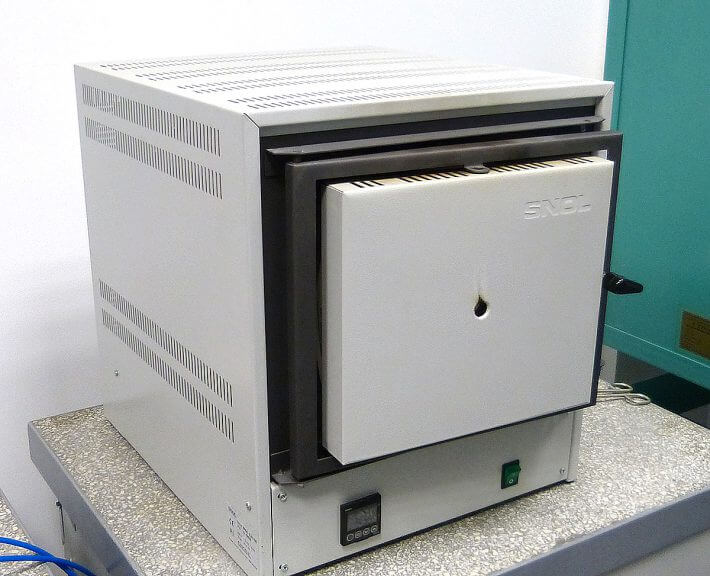
Piec
Climate chambers (including walk-in, low-temperature, high-temperature, object conditioning, large-size chambers)
BOSMAL has a number of climatic chambers with different temperature ranges and sizes. They allow objects to be tested or conditioned under different climatic conditions:
- temperature: from -70°C to 210°C
- humidity: from 10 to 98% RH
Plug & Test Lab for climatic and temperaturę loads of e-drives and battery packs
System consisted of
- fire distinguish system
- climatic chamber (-60°C to 160°C)
- bi-directional power supply 250kW
- cooling medium conditioning system (chiller)
- data acquisition (analog/digital signals + CAN/LIN communication)
Technical data
- working area dimensions 230 x 220 x 290 mm
- performance: 7K/min (3K/min with 800kg load)
- maximum floor load : 30000 N/m2
- cycler: 1000V; +/-1000A ; 250kW; max 300kW
Climats walk-in chamber
Large-scale low-temperature, high-temperature and object conditioning chambers
Two free-standing, 12-meter chambers for conditioning test objects (mainly vehicles) and performing tests at various ambient temperatures and humidity levels
Parameters:
- temp.: from -35°C to 65°C
- possibility to set humidity at levels over 95% with +/-2% accuracy under steady-state conditions, at 55°C
- chamber dimensions (L×W×H): 11500×2285×2550 mm
- door dimensions (W×H): 2285×2550 mm
Chambers for testing the resistance of products to light and weather conditions
Exposure test chambers for laboratory light sources – Xenon arc lamps
Xenon Weather-Ometer accelerated aging test chambers
The test method involves exposing samples to artificial atmospheric conditions (filtered xenon lamp light, temperature, humidity and overexposure) for laboratory simulation of the ageing processes that occur during natural weathering.
The chambers allow control of:
- irradiance in W/m2 and light energy in MJ/m2
- the temperature of the black thermometer and the temperature of the air in the chamber, in the range from 40° to 120°C
- adjustment of relative humidity of the air in the range from 10 to 100% RH
Resistance to weather conditions is assessed by comparing the colour change of the tested working sample to a sample not exposed by means of a grey scale according to ISO 105-A02.
Climatic chamber with MHG 2500W light module (metal halide lamp)
Chamber’s equipment:
- Light module 2500W allowing solar radiation simulation
Basic chamber parameters:
- temperature range: from -75°C to 180°C
- humidity range: from 10 to 98% RH
- innternal volume: 1100 L
- chamber internal dimensions : 1100×1000×1000 mm (width×height×depth)
Product UV radiation resistance tests
UVTest is an ageing chamber with 8 fluorescent UV lamps (UVA 340, UVB 313, UVA 351). The device is designed to test resistance to photo-oxidation, i.e. to ultraviolet (UV) radiation in its most destructive range – UVA and UVB, in conjunction with the condensation cycle.
The UVTest chamber allows control of the test parameters: the intensity of the UV radiation and the temperature the samples are exposed to during the test. Programming and monitoring of tests takes place through a built-in microprocessor controller with an LCD touch screen. High repeatability of tests is ensured by the ultraviolet (UV) calibration system.
- range of radiation intensity adjustment: from 0.35 to 1.55 W/m2 for UV-A lamps and from 0.35 to 1.23 W/m2 for UV-B lamps,
- black plate temperature (BPT) control range: 35-80°C for the light phase; 35-60°C for the condensation/coating phase.
Xenon lamp aging chamber
The chamber, with a xenon lamp mounted inside a rotating drum with sample holders, is a device for ageing, light resistance and photo stability testing. It allows damage caused by exposure to the total spectrum of sunlight and rain to be reproduced. Within a few days or weeks, the test chamber can reproduce material damage that occurs over months or years under atmospheric conditions. The following test parameters are controlled:
- spectrum (full range of sunlight)
- irradiance
- relative humidity (20-95%)
- temperature in the chamber
- reference temperature of a black thermometer
- shower (front and back)
Xenon lamp aging chamber
The chamber, with 3 Xenon lamps placed over horizontally positioned samples, is a device for testing ageing, light fastness, colour fastness and photo stability. It allows damage caused by exposure to the total spectrum of sunlight and rain to be reproduced. Within a few days or weeks, the test chamber can reproduce material damage that occurs over months or years under atmospheric conditions. The following test parameters are controlled:
- spectrum (full range of sunlight)
- irradiance
- relative humidity (20-95%)
- temperature in the chamber
- reference temperature of a black thermometer
- spray on samples (simulated rain, spray on two sides, spray with other liquid)
Ozone ageing test chamber
Ozone resistance test chamber
The chamber assesses the resistance to cracking of a rubber or thermoplastic rubber subjected to static or dynamic tensile strains in the atmosphere with a certain concentration of ozone, temperature and humidity. The ozone chamber with a working volume of 310 litres also allows the testing of objects other than rubber or rubber in a wide range of ozone concentrations, from 25 to 1000 pphm.
High-pressure and product tightness test chambers
High-pressure pulsation and burst test chambers
More details on the page: Pressure tests
Product tightness tests in chamber – helium tightness
Devices
- Helium leak detector (range from 1000 mbar∙l/s to <5×10-12 mbar∙l/s)
- Compressor, permitting helium pressures of over 400 bar to be achieved
- Test chambers: 300×300×500 mm; 800×800×1000 mm
Shock test chambers
Climats shock chamber
The shock chamber is designed to expose the tested sample to thermal shocks. The device is a horizontal chamber, i.e. the working chambers are located next to each other.
The shock chamber enables execution of tests of the resistance of parts and devices to rapid temperature changes (temperature shocks). The shock test in the device is carried out by means of an automatically controlled elevator moving between chambers with two extreme temperatures: high and low. It is possible to perform an accurate simulation in accordance with various standards (including: PN-EN 60068-2-14, PN-EN 60068-2-1, PN-EN 60068-2-2 and others – in terms of the technical possibilities of the chamber).
Basic technical parameters of the chamber:
- temperature range: from -70°C to 180°C
- direction of basket movement: horizontal
- basket capacity: 512 l
- basket dimensions: (80×80×80) cm
- max. basket load: 80 kg
- max. adjustable transition time: 10 – 40 s
Powrót
do góry strony

